January 19, 2020 - National Air & Space Museum Udvar-Hazy
|
|
It was pretty windy today so no flying. The football conference championship games didn't start to 3PM. I had nothing on the schedule so decided to drive down to the National Air & Space Museum at Udvar-Hazy by Dulles Airport. My first visit was back in 2004. I've been here multiple times since but haven't had a chance to leisurely check out all the planes in quite a few years.
The drive down here on this Sunday morning, around the Capital beltway, was about as traffic-free as it gets. On the drive home, there were more cars on the road but still not bad.
|
| |
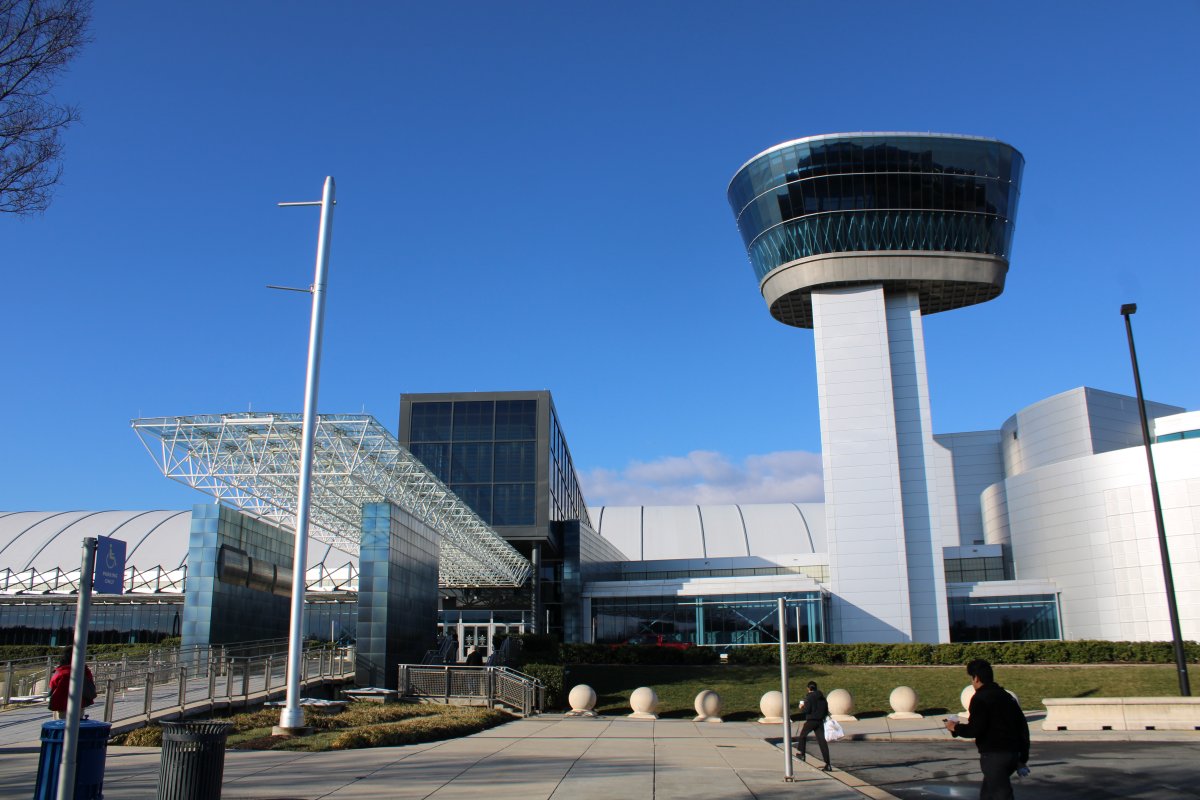 |
|
|
Walking into the entrance to Boeing Aviation Hangar. The thing to remember about Udvar-Hazy is that you won't see the big-name World War II fighter planes here -- Mustang, Me-109, Zero, Spitfire, Me-262, Wildcat -- They are in the NASM's National Mall facility. But everything else is pretty much here. By the way, the NASM National Mall facility is in the midst of a seven year renovation. When it reopens, it will be like going to a new aviation museum!
|
| |
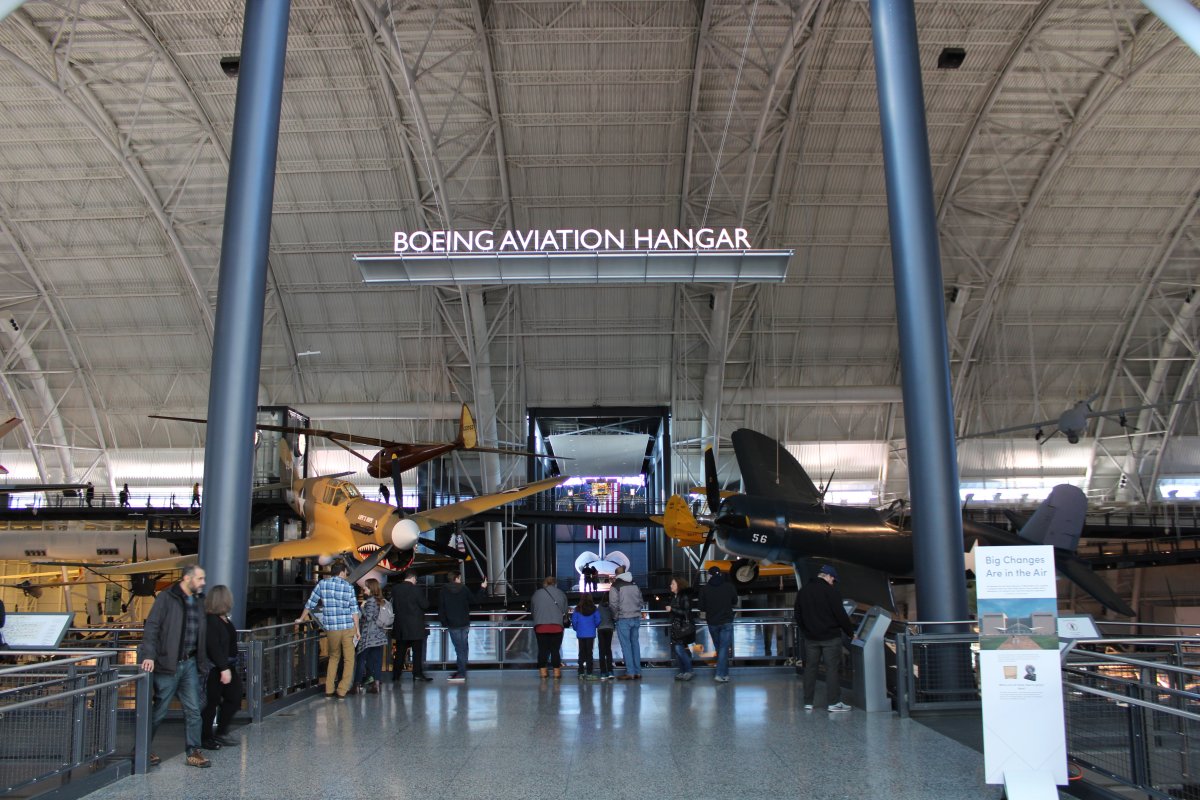 |
|
| Head on shot of the shark-mouth P-40 Warhawk. |
| |
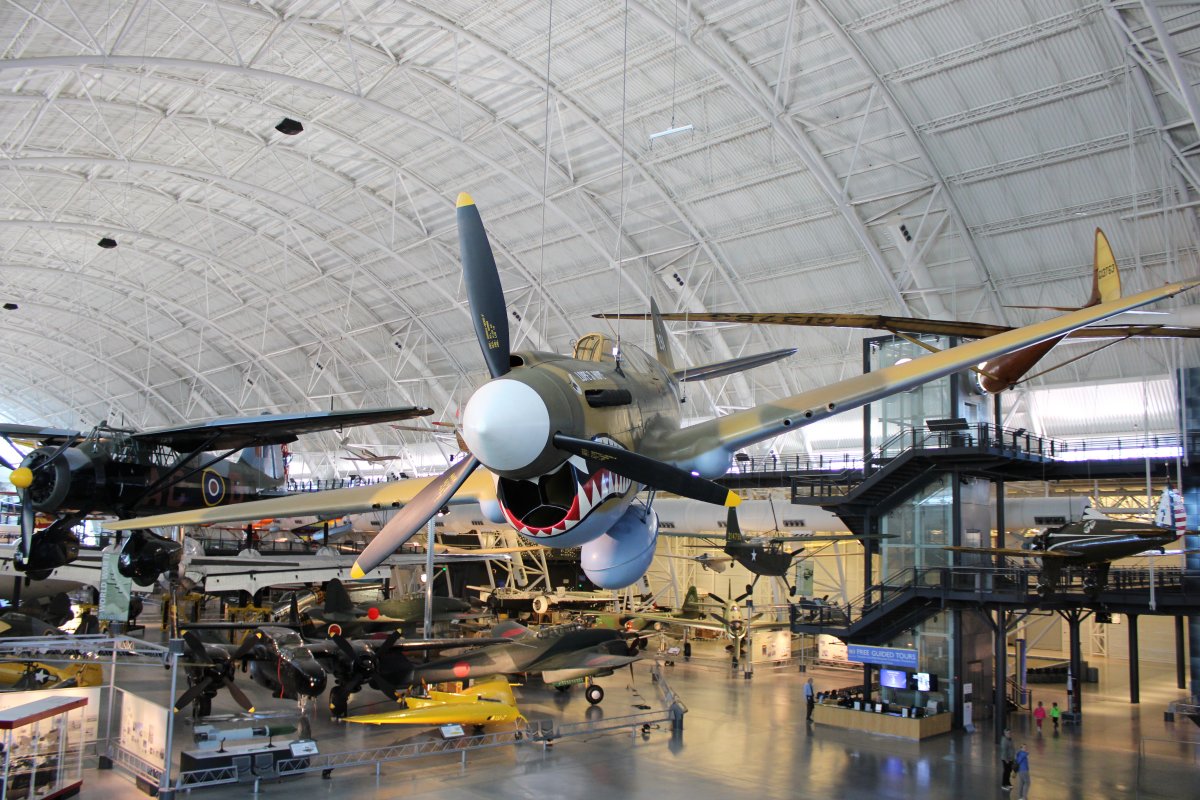 |
|
|
The P-40 Warhawk, F4U Corsair and SR-71 Blackbird are right at the main entrance.
|
| |
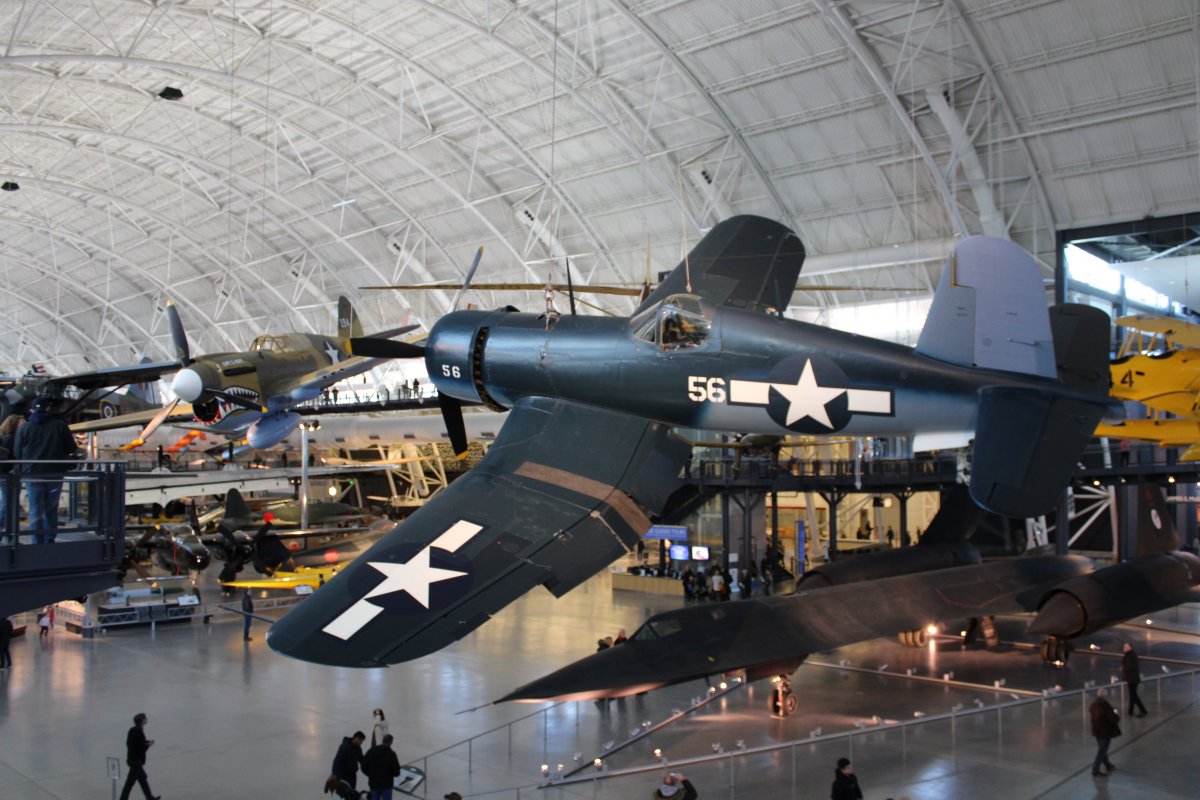 |
|
| The main three fighters of the U.S. Army Air Corps in WWII were the P-51 Mustang, P-47 Thunderbolt and P-38 Lighting. The huge P-47 Thunderbolt wasn't a bad dogfighter but because of its ruggedness, firepower, and radial engine, it was a GREAT fighter-bomber. |
| |
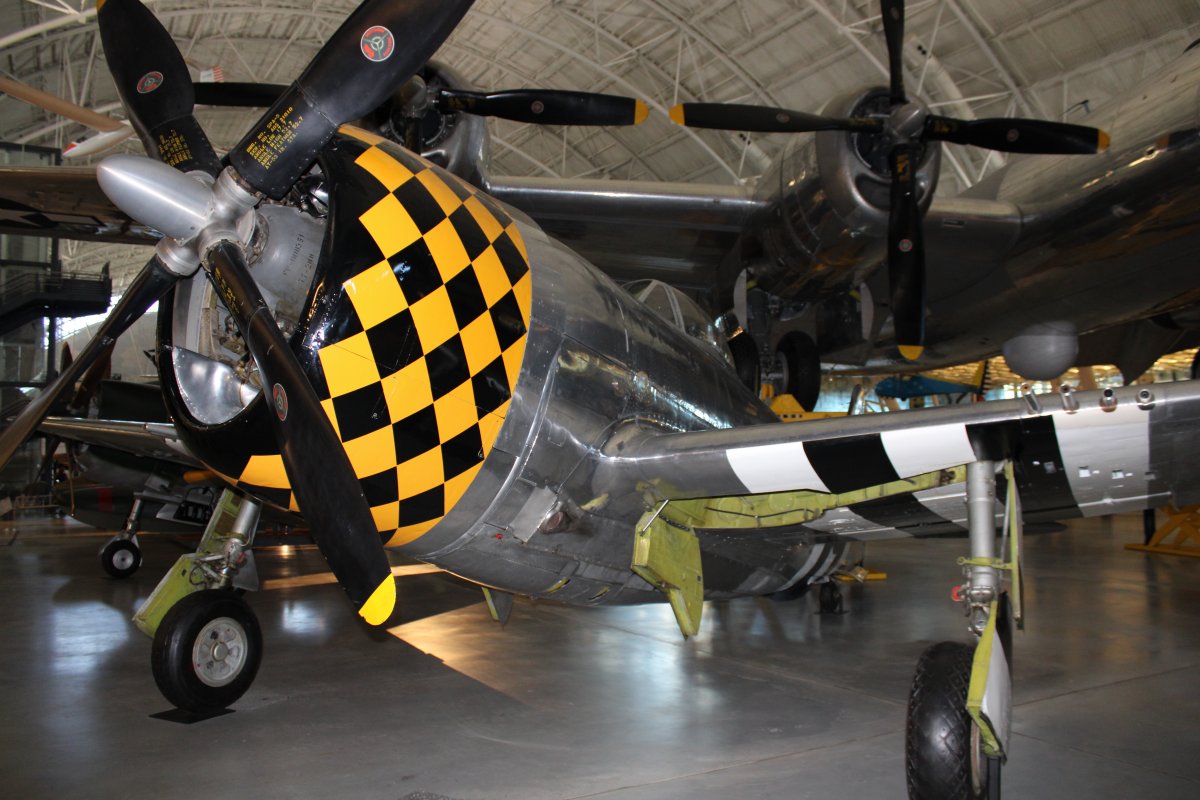 |
|
| Massive on the ground, the P-47 was graceful in the air with its eliptical wings. |
| |
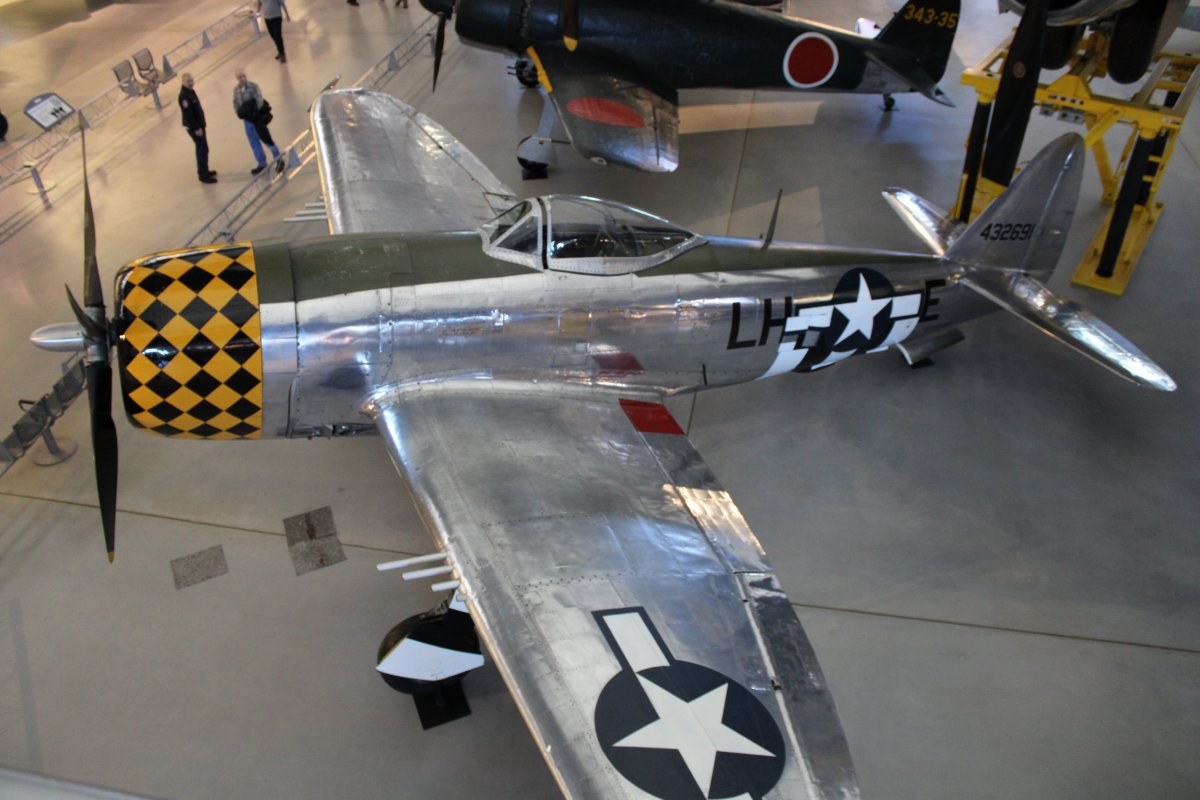 |
|
| The Army Air Corps loved the P-38 in the Pacific theatre since so much of the flying there was over water. The second engine was nice to have in that situation. |
| |
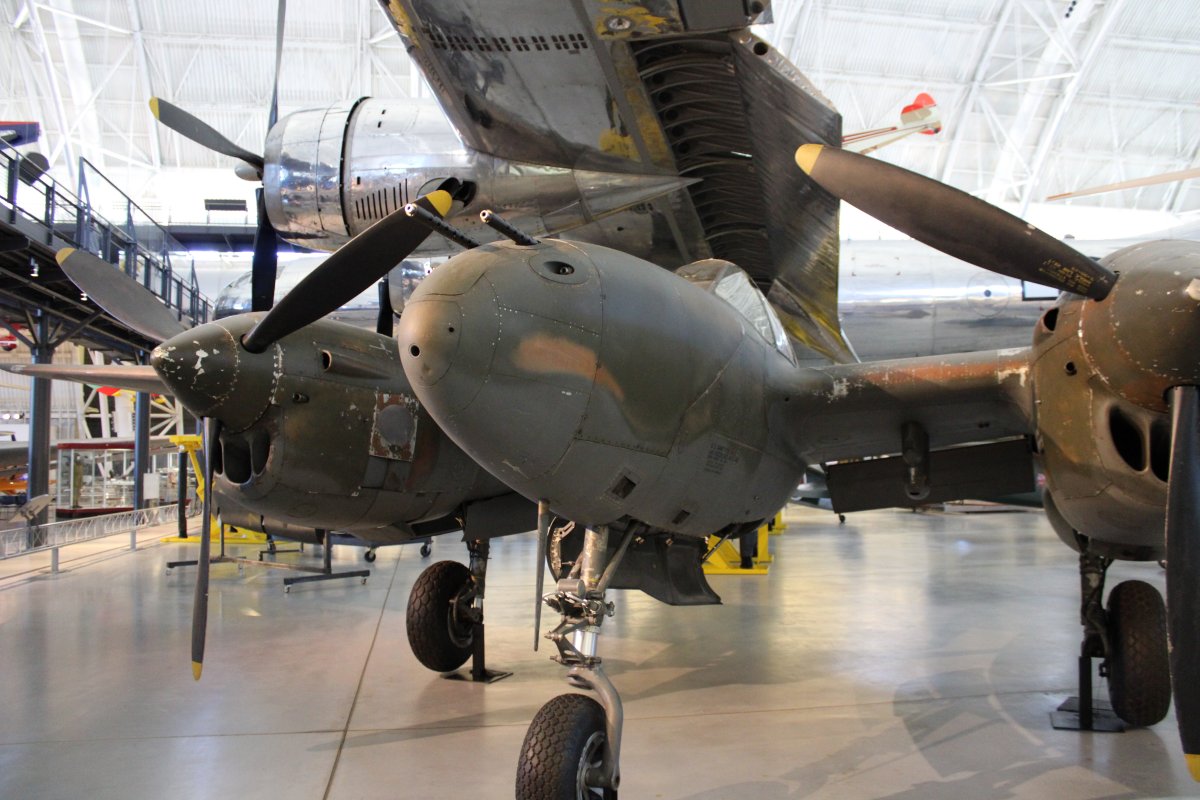 |
|
|
I've always liked how they kept the original paint job on this P-38. You can easily imagine it on Henderson Field sy Guadalcanal.
|
| |
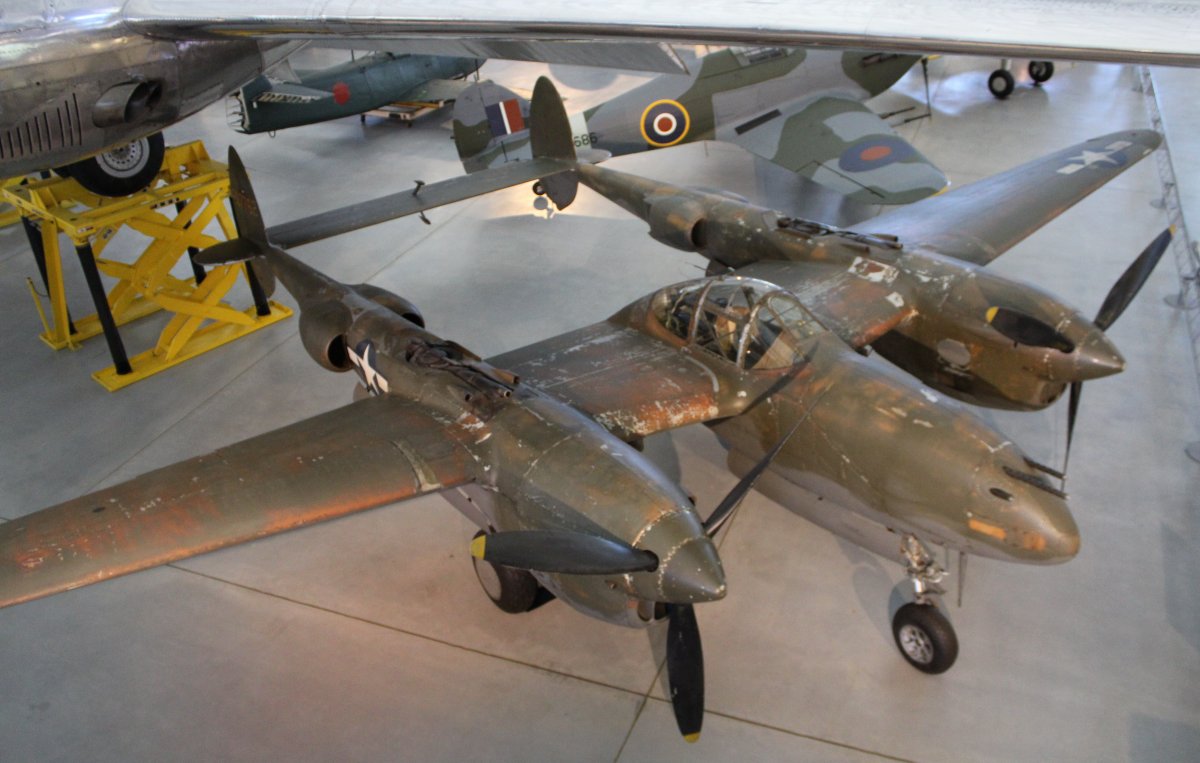 |
|
| An immaculate Hawker Hurricane. I remember seeing this plane under restoration on a tour of the NASM Paul Garber facility in Silver Spring, Maryland. |
| |
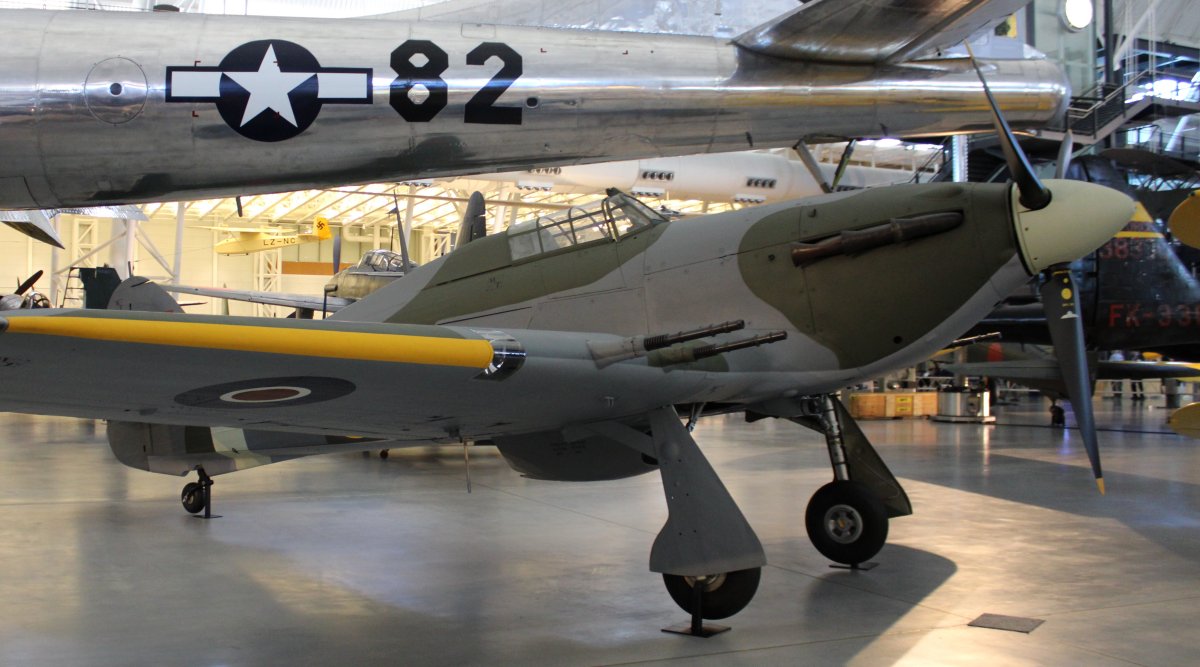 |
|
|
Looking up at the U.S. Navy's main fighter of World War II: the F6F Hellcat.
|
| |
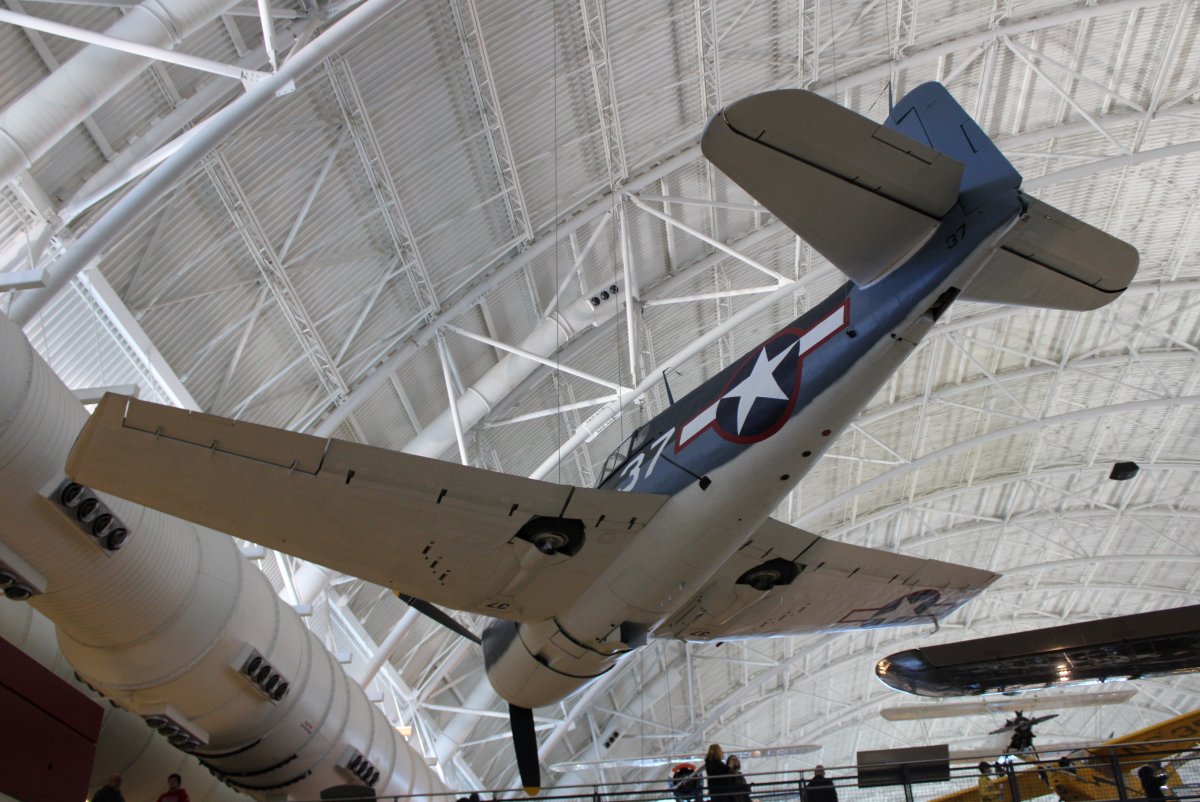 |
|
| I'm sure this plane would be in the NASM Mall facility but it is here because of its great size. It's the B-29 Enola Gay which dropped the first atomic bomb on Hiroshima, ending the war against Japan and forestalling an invation of Japan which would have been nightmarish for both sides. |
| |
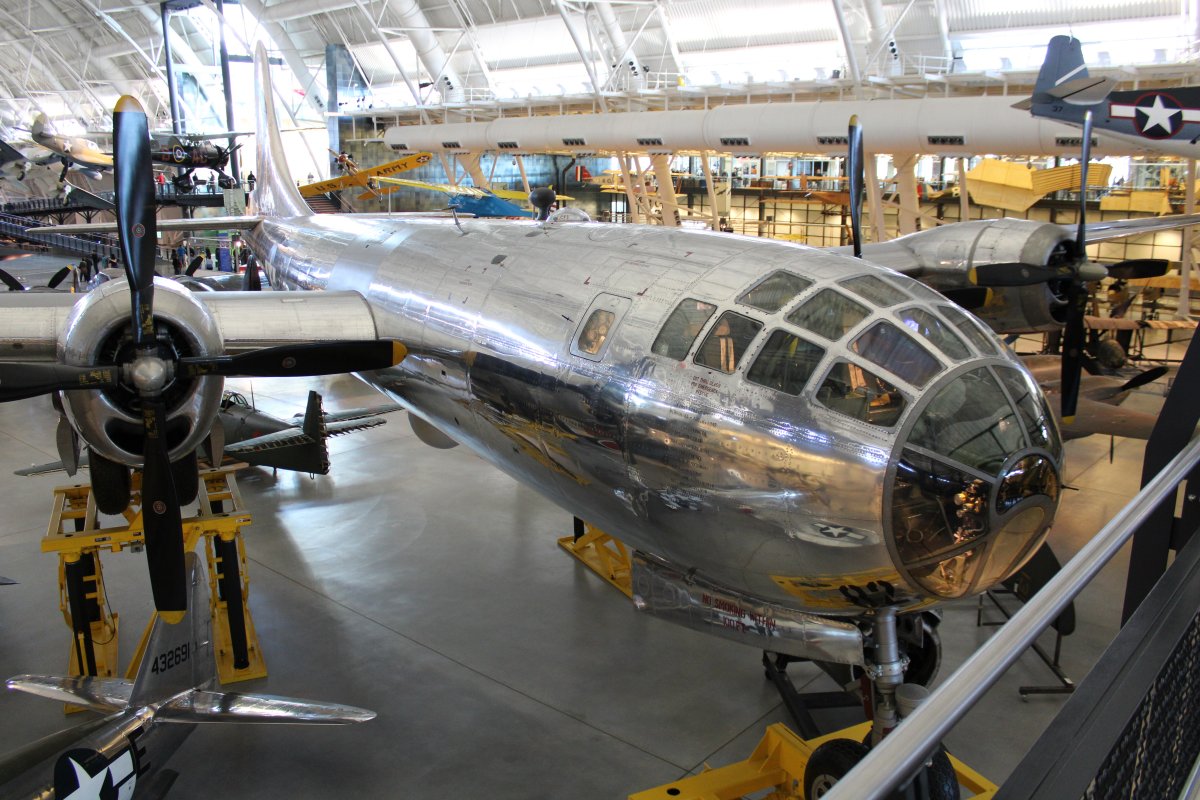 |
|
| A picture of the Enola Gay in its entirety with a good look a lot of the other planes at Udvar Hazy. |
| |
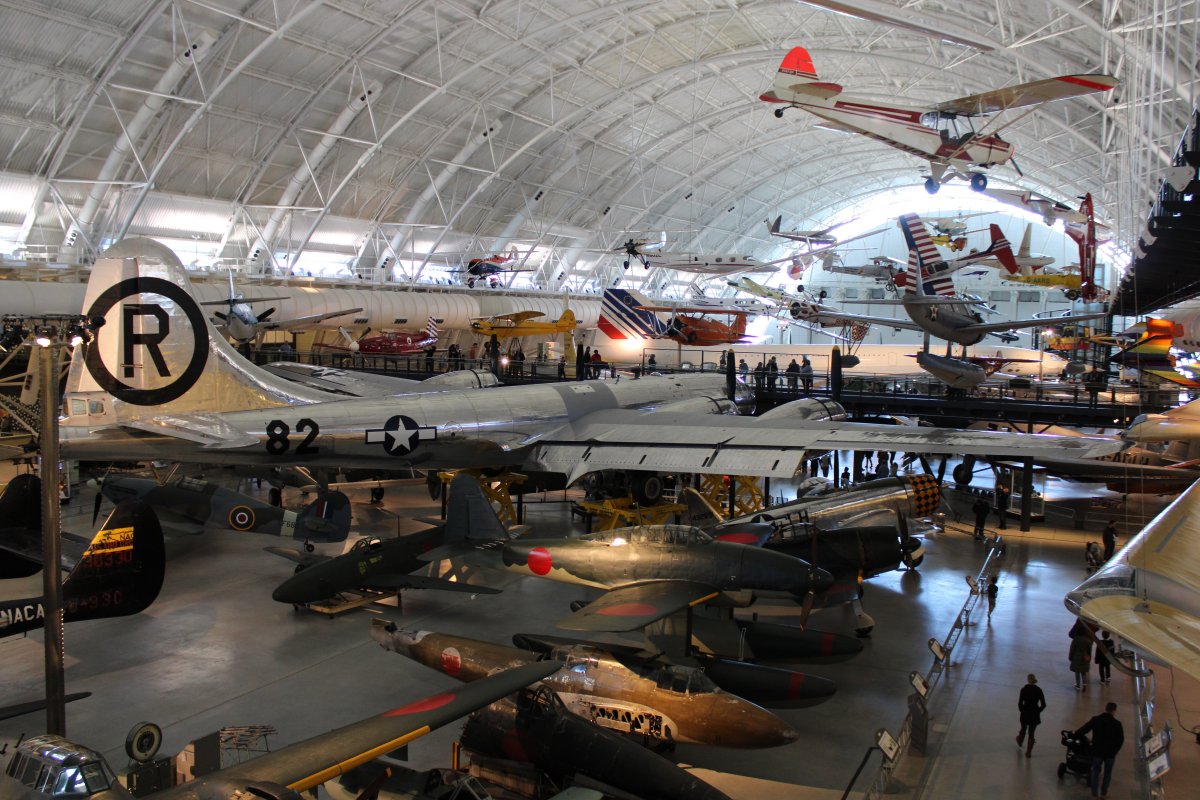 |
|
| Looking at the Enola Gay head on. They really have the planes packed in here, don't they? |
| |
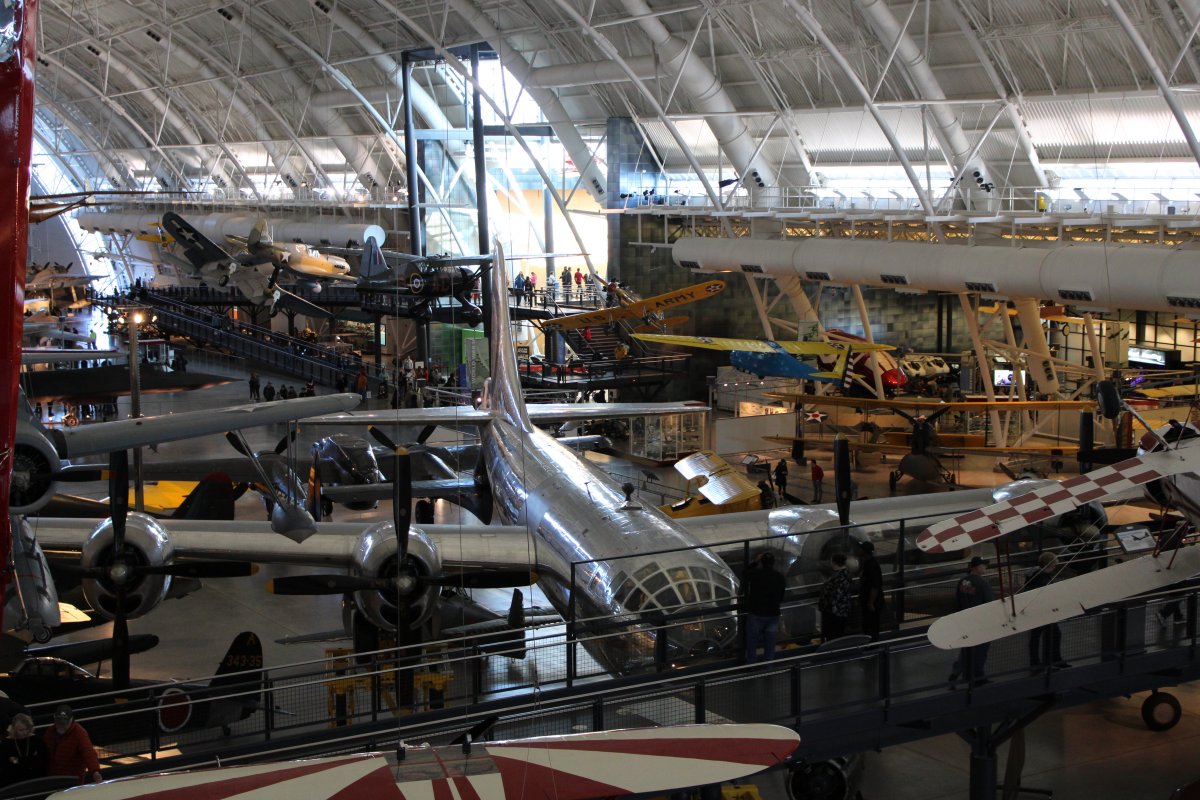 |
|
|
The rare P-61 Black Widow nightfighter, one of only four in the world. One is in the Air Force Museum at Dayton, Ohio. One is in a Chinese air museum, of all places. And the fourth is at the Mid-Atlantic Aviation Museum in Reading, Pennsylvania being restored to flying condition. More about that in tomorrow's web log post.
|
| |
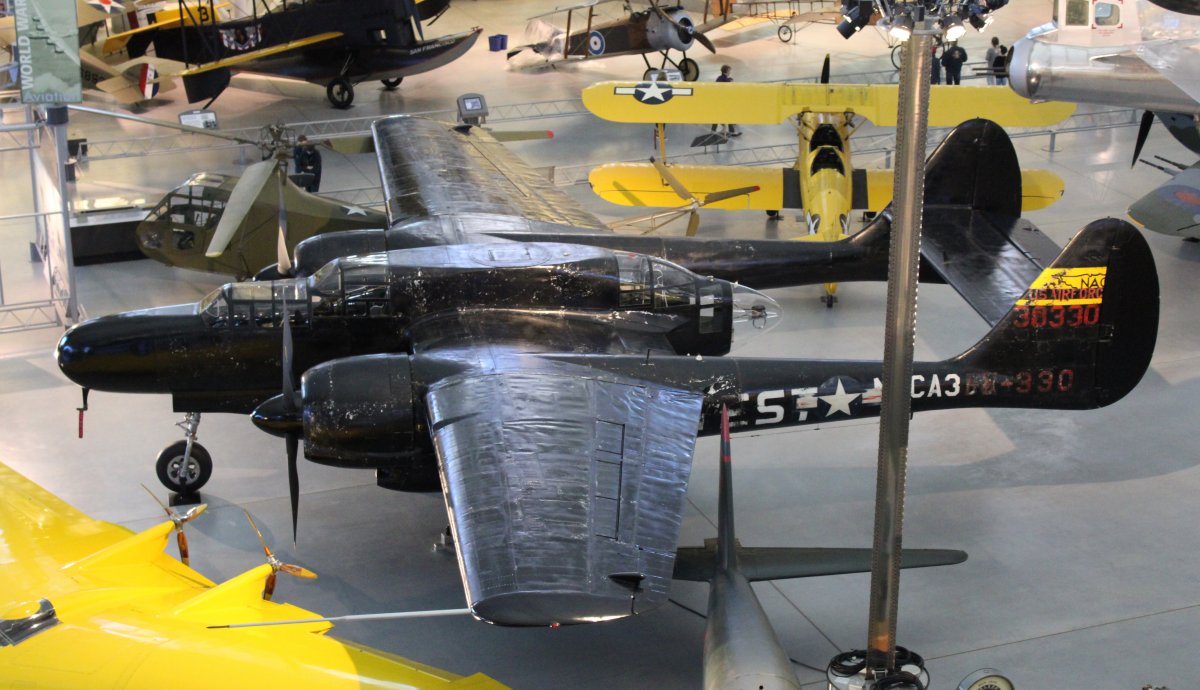 |
|
| A Sikorsky JRS-1, one of ten that was at Pearl Harbor on December 7, 1941. It was used for maritime patrol. I imagine this one will be restored some day. |
| |
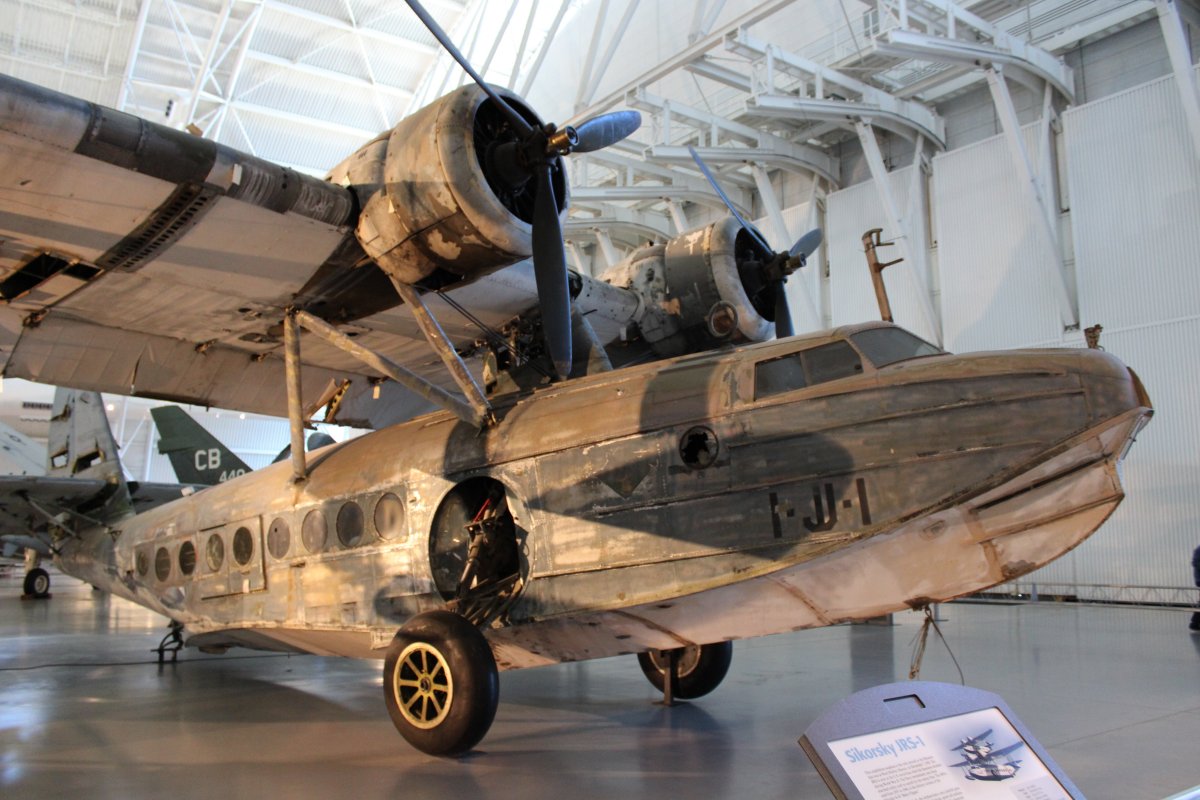 |
|
A big Curtiss SB2C Helldiver dive bomber, which replaced the famous SBD Dauntless on the Navy's aircraft carriers during World War II. |
| |
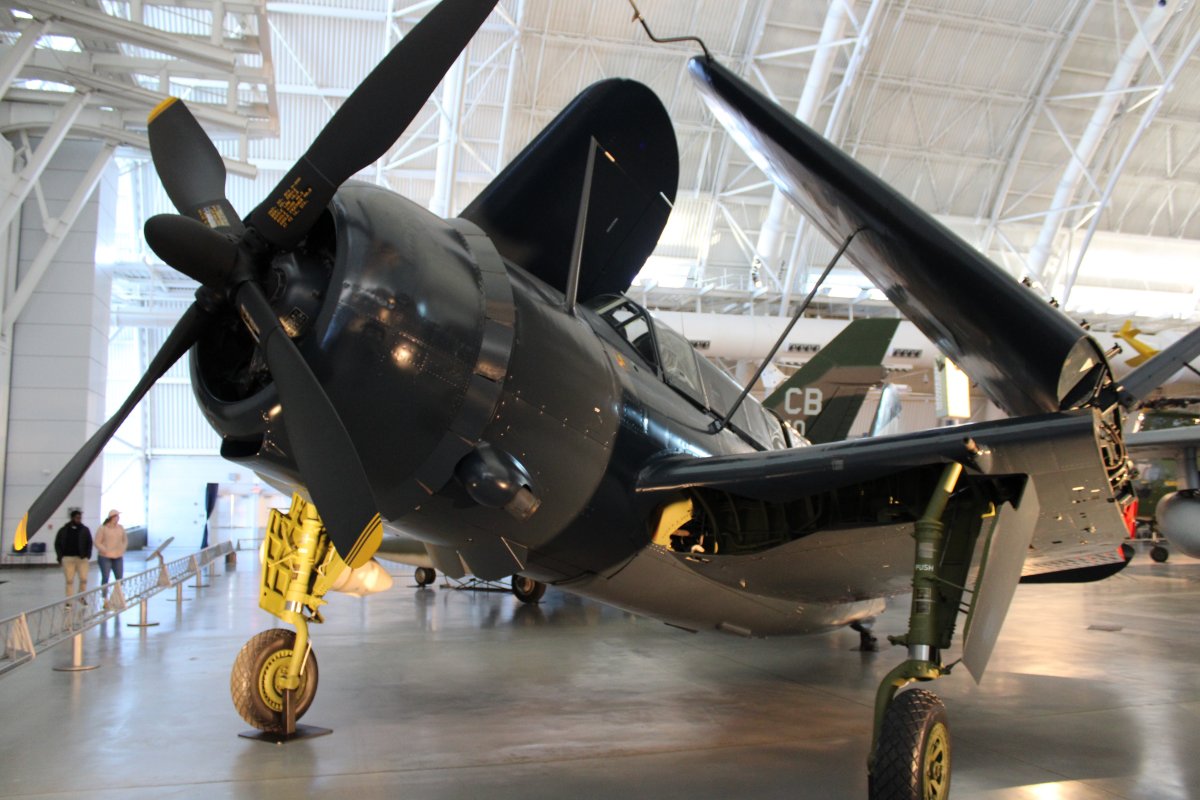 |
|
| The Dornier Do 335 Arrow was a big, twin-engine fighter. But it was just another promising German weapon that was too little and too late. The Do-335's performance was much better than other twin-engine designs due to its unique push-pull configuration and the lower aerodynamic drag of the in-line alignment of the two engines. But only 37 were built, there was no fuel to fly it, and the German's were not able to deploy it operationally. |
| |
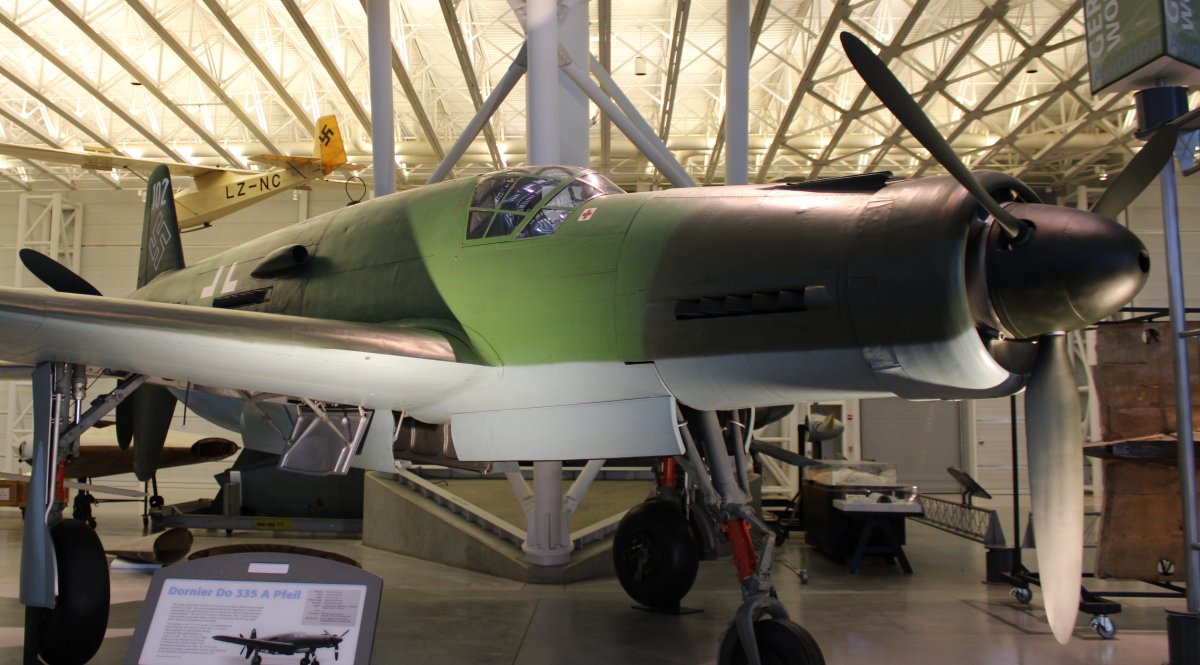 |
|
| The Arado Ar 234 Blitz: the world's first operational jet-powered bomber. Produced in limited numbers it was used almost entirely in the reconnaissance role. In its few uses as a bomber it proved to be nearly impossible to intercept. It was the last Luftwaffe aircraft to fly over the UK during the war, in April 1945. A total of 210 were built. |
| |
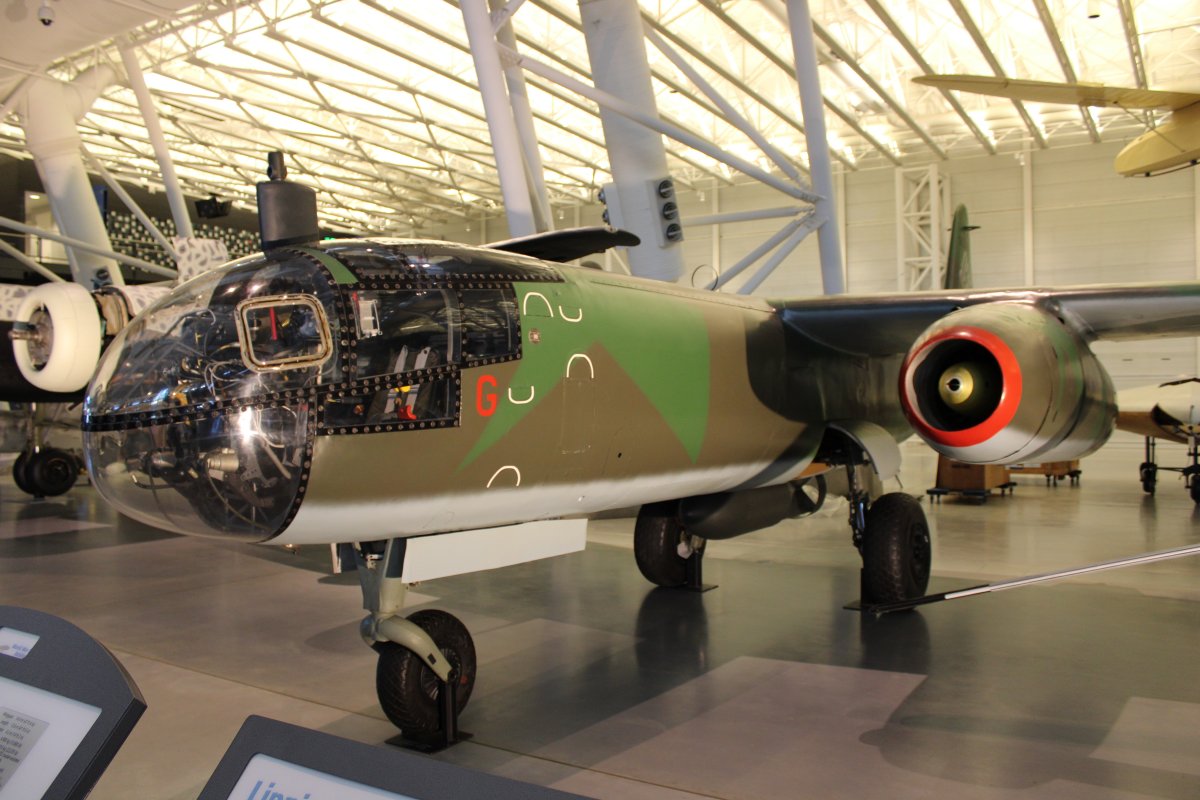 |
|
| Nice head-on shot of the Ar-234. |
| |
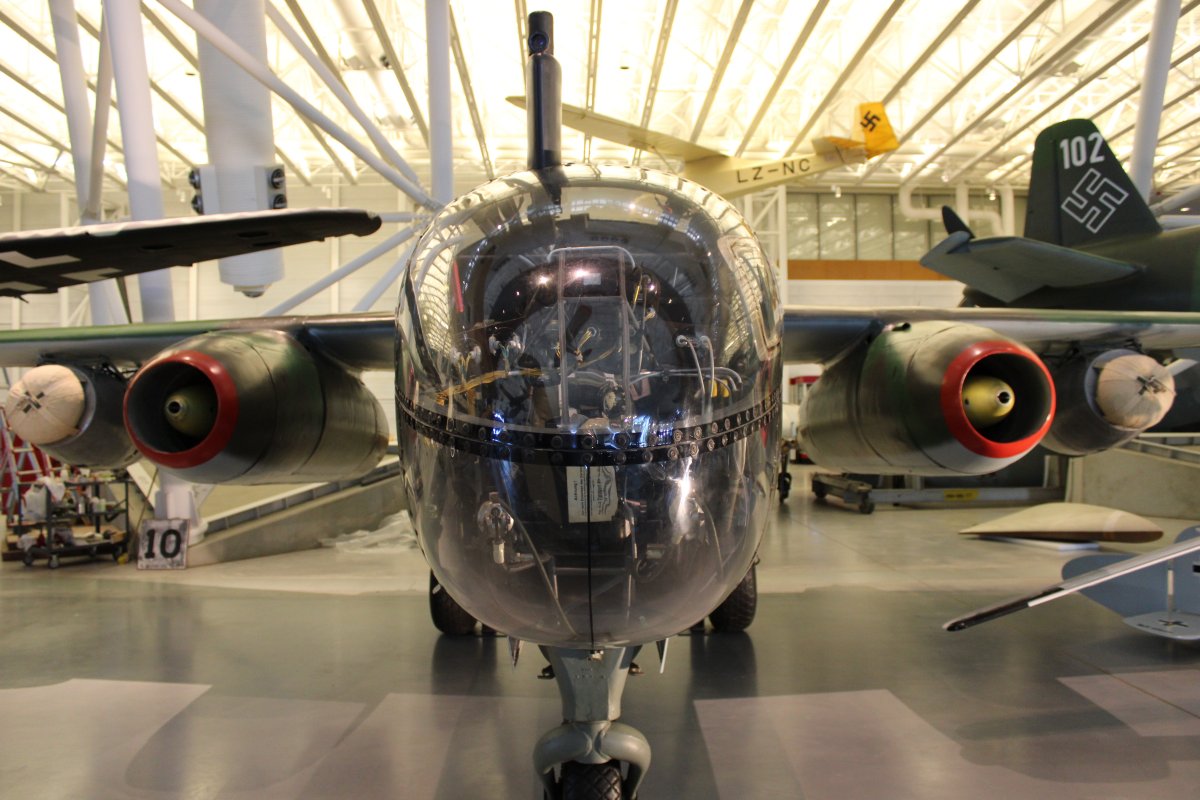 |
|
|
Look how small the jet bomber is compared to the big fighter.
|
| |
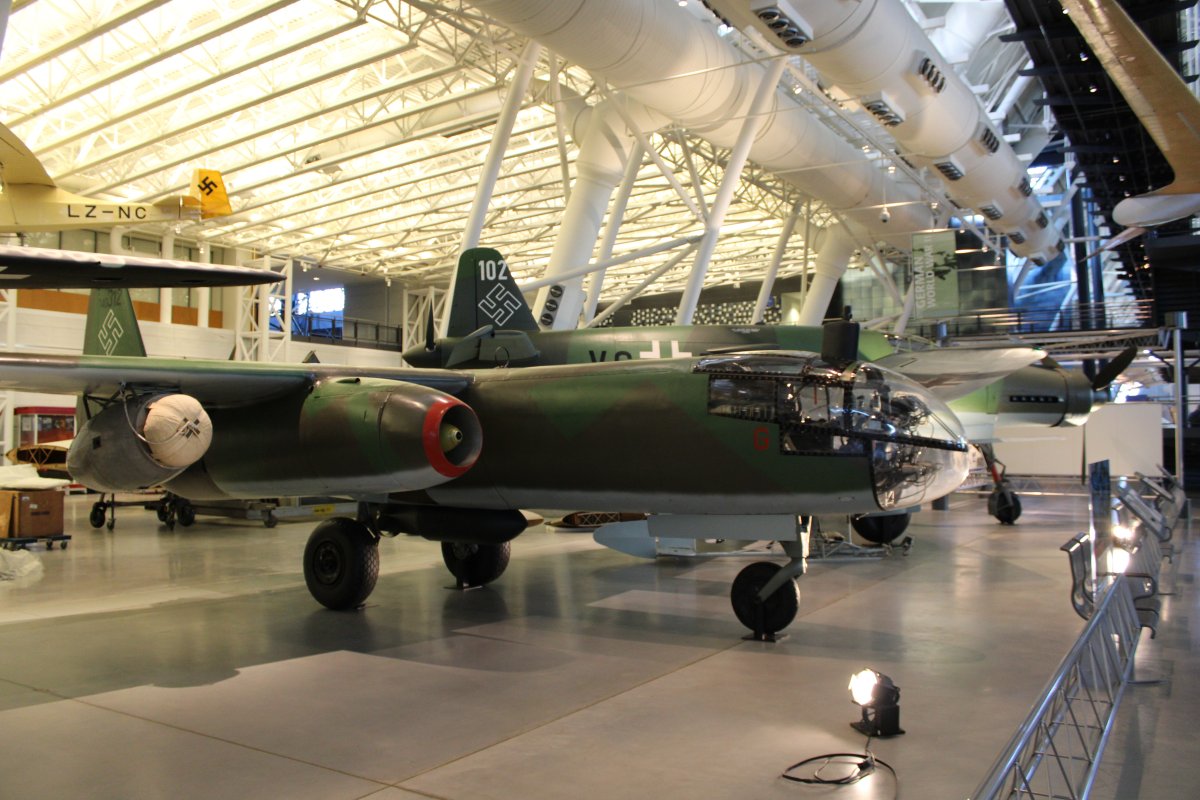 |
|
|
The FW-190, along with the Me-109, were the primary fighters of the Luftwaffe. This 190 needs some wheels, though.
|
| |
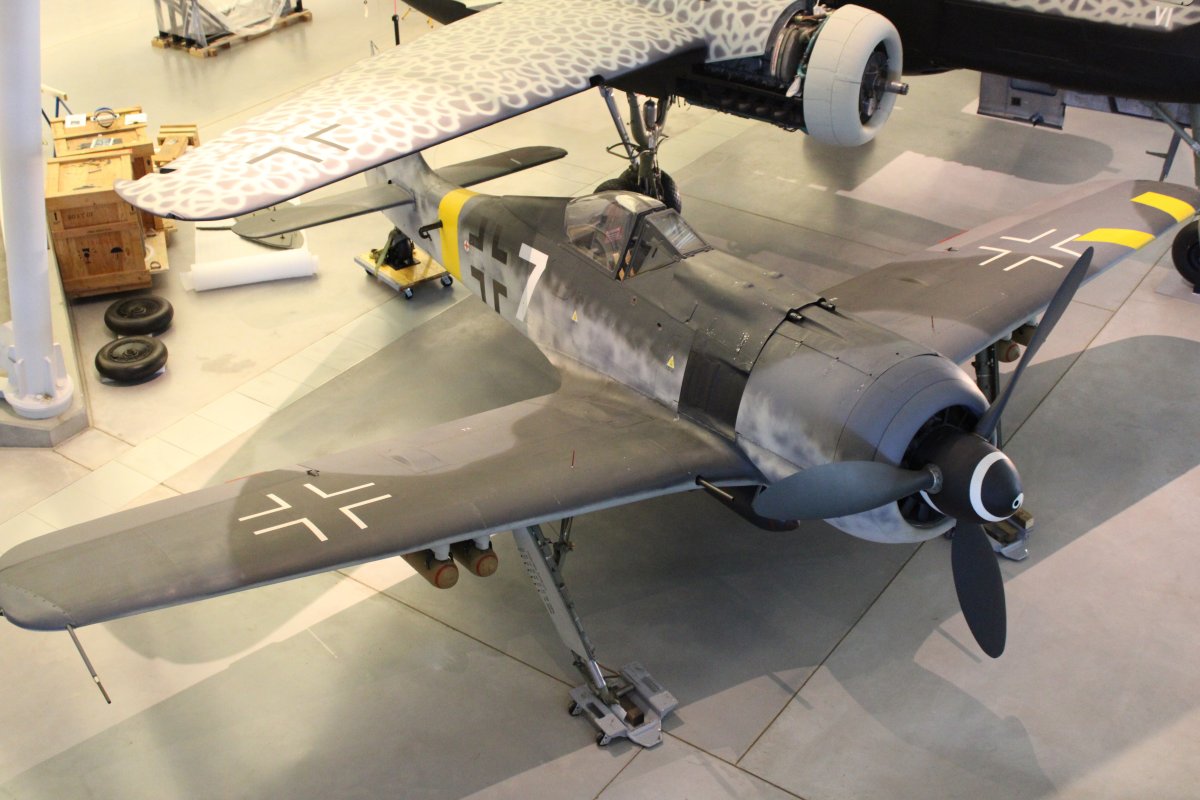 |
|
| The He-219 Night Owl nightfighter which has slowly been reassembled here over the years. It looks like they are almost done. This nightfighter was effective but complex. The Germans were only able to build less than 300 of them. |
| |
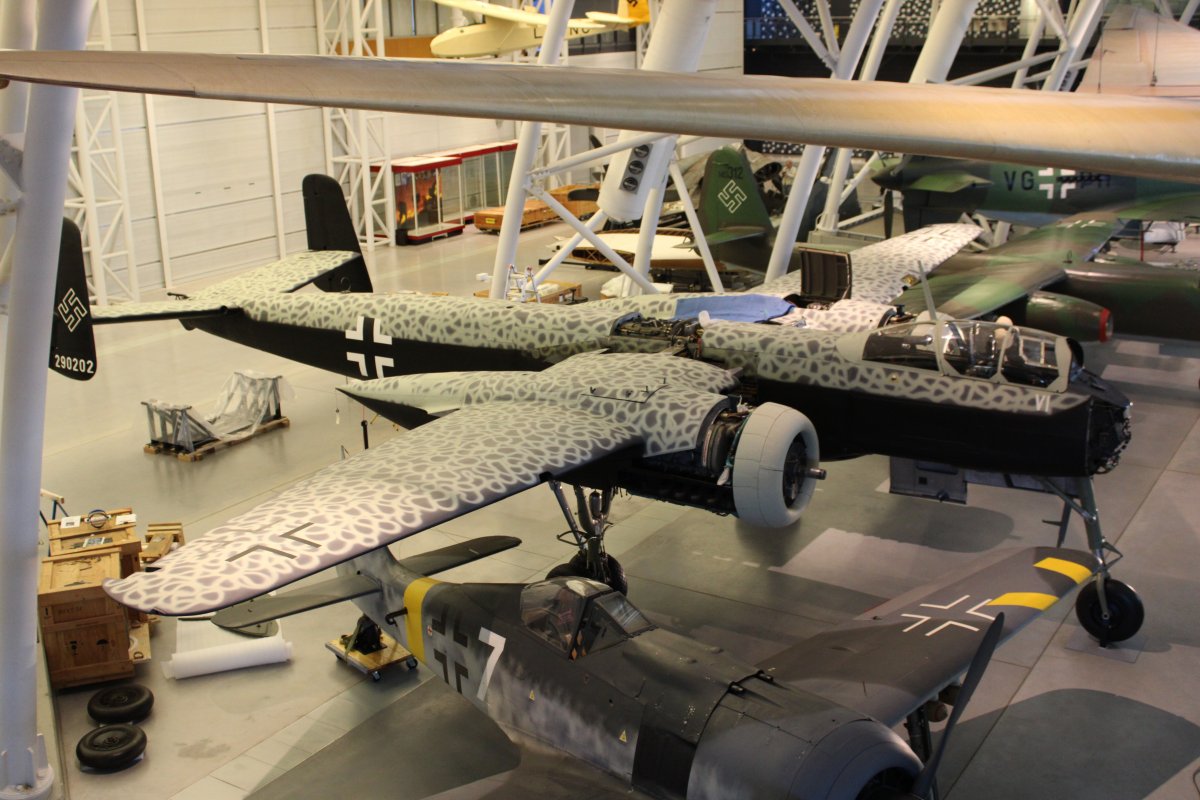 |
|
|
The passenger jet that started it all: The Boeing 707.
|
| |
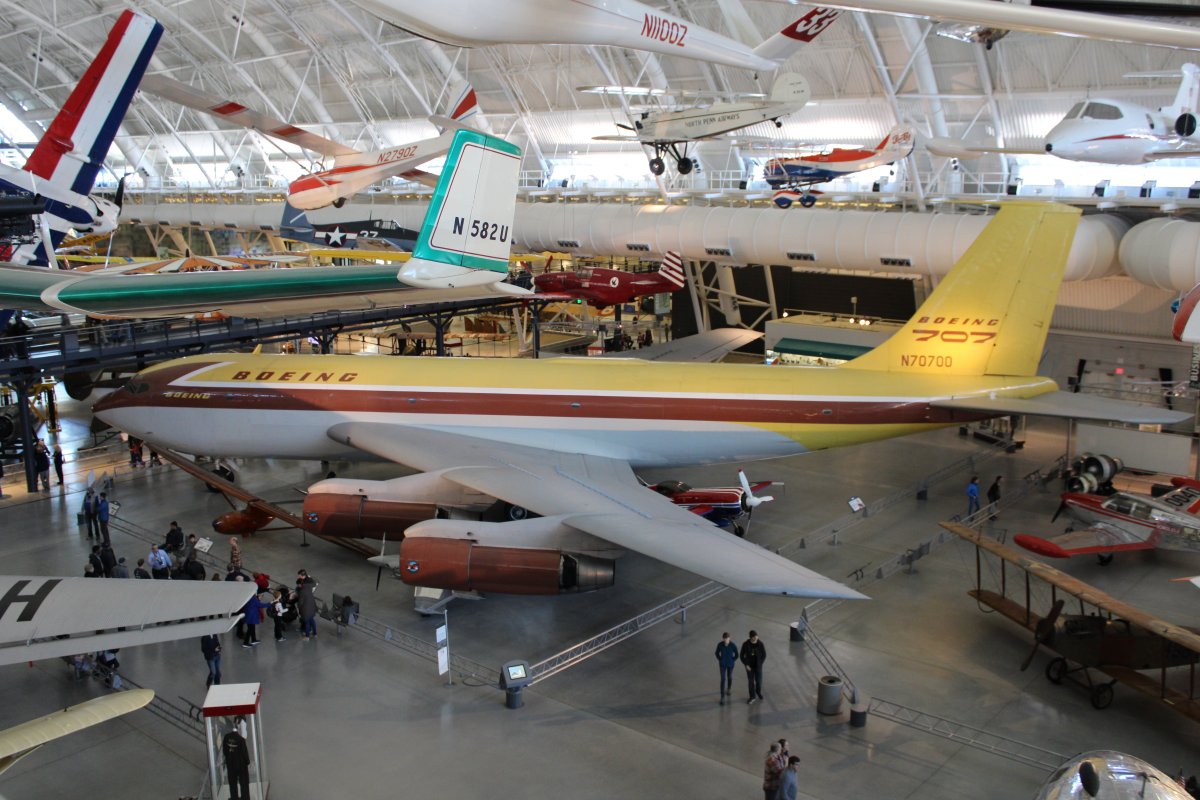 |
|
| I know this N3N Stearman floatplane very well. It hung in Dahlgreen Hall at the U.S. Naval Academy during the years I was there. I recall looking at it often. |
| |
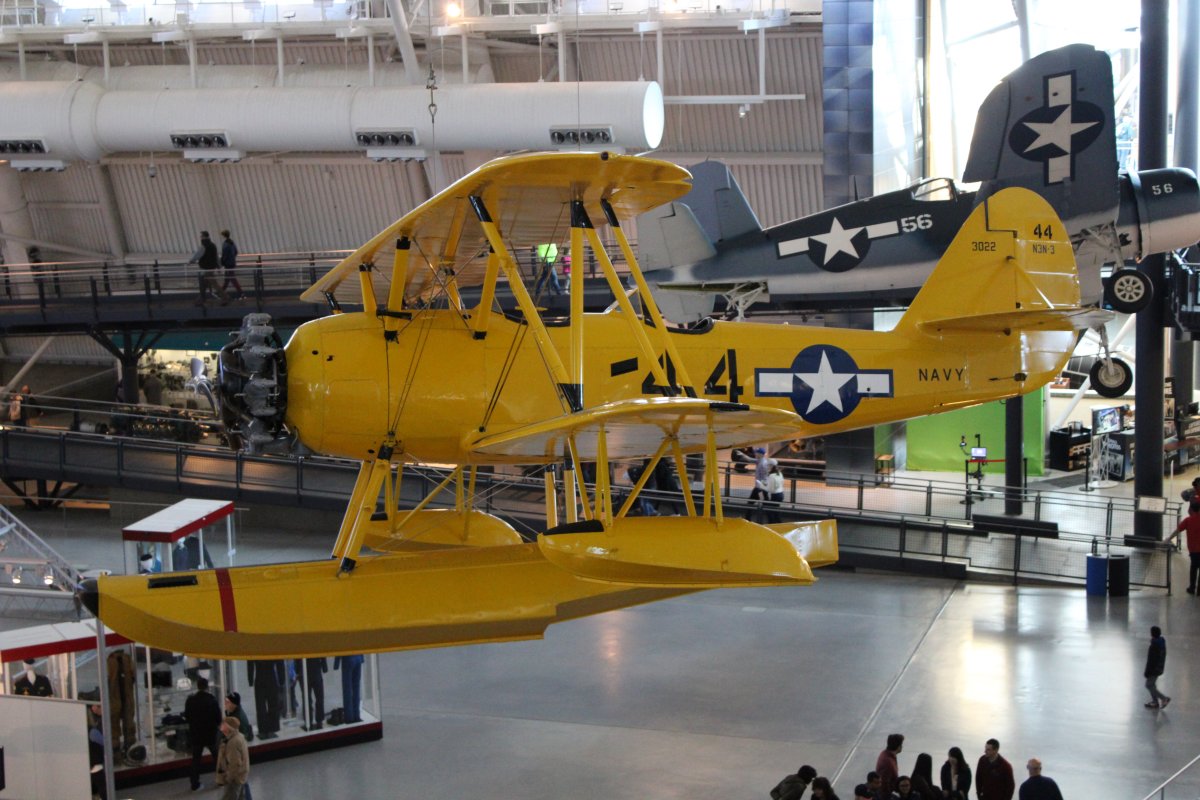 |
|
| Udvar-Hazy has one of the most complete and best presented display of engines I've ever seen. |
| |
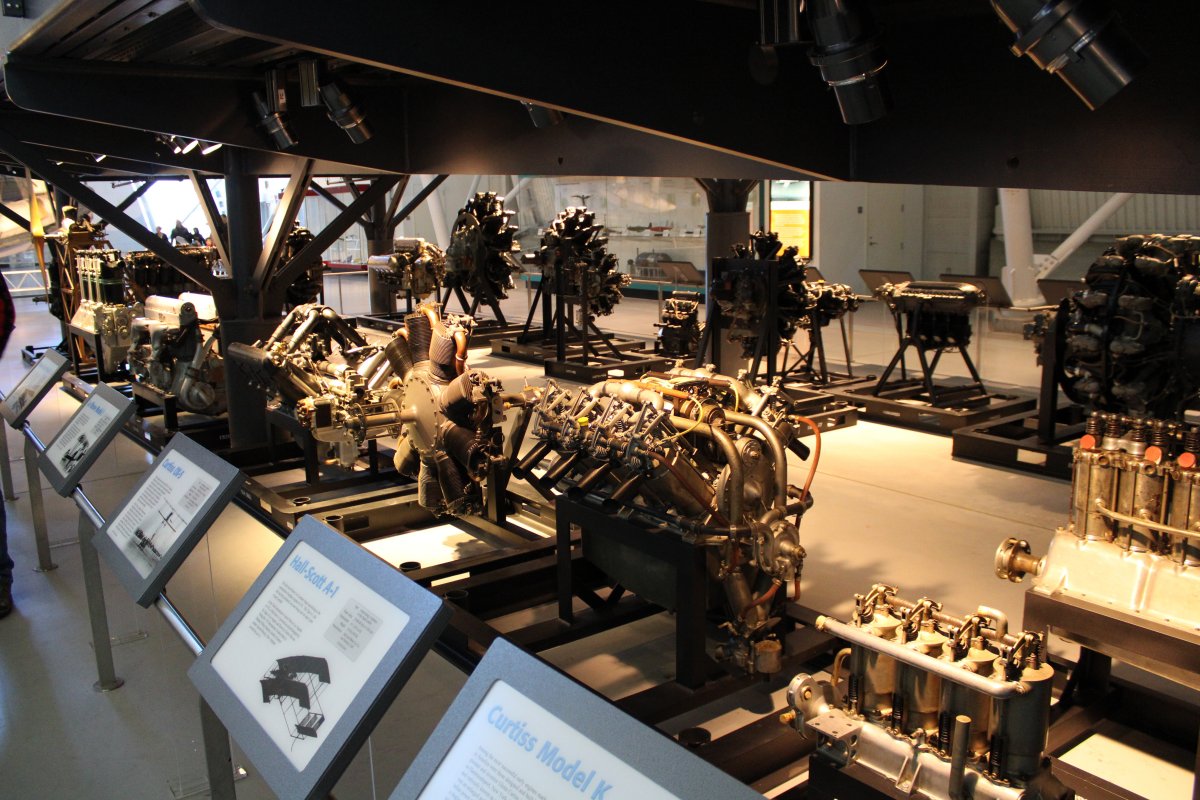 |
|
| I see they have added a statue of the great R.A. Bob Hoover next to the Shrike Commander he made famous with his famous routine. I saw him fly it at the Reno Air Races when I was a kid. |
| |
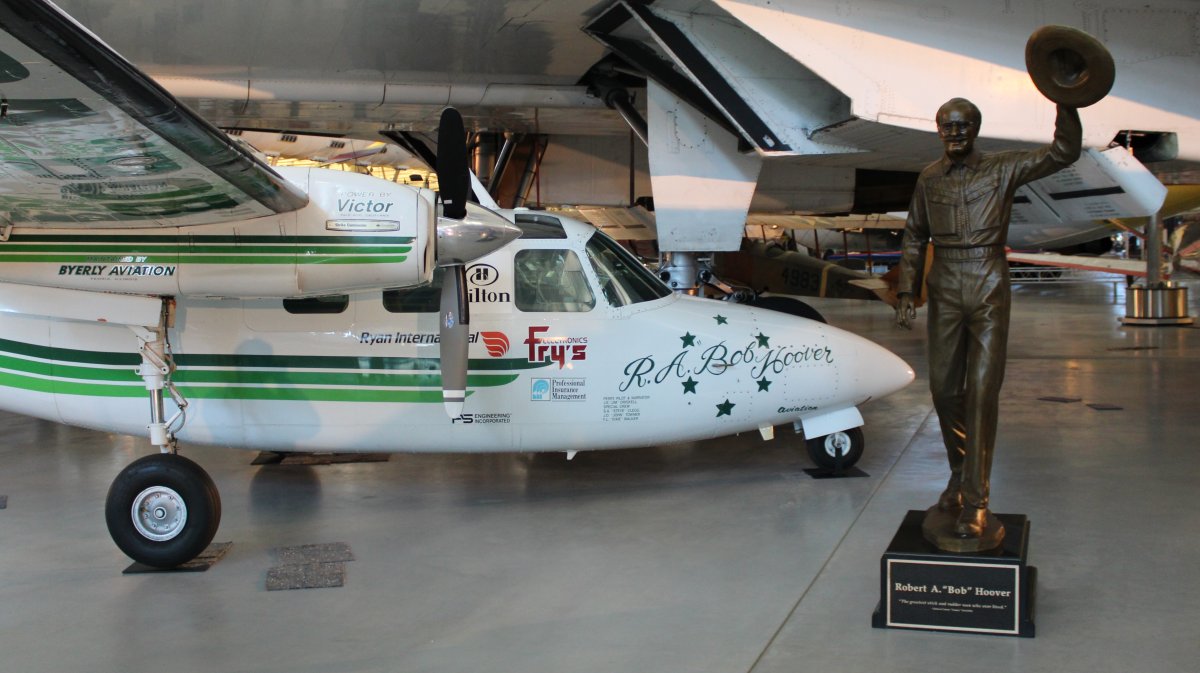 |
|
I toured the Mary Engen restoration facility a little under two years ago. It doesn't look like they made much progress on putting the B-26 "Flak-Bait" back together compared to what I saw then. The nose section was in the NASM's Mall Facility World War II section for many years. |
| |
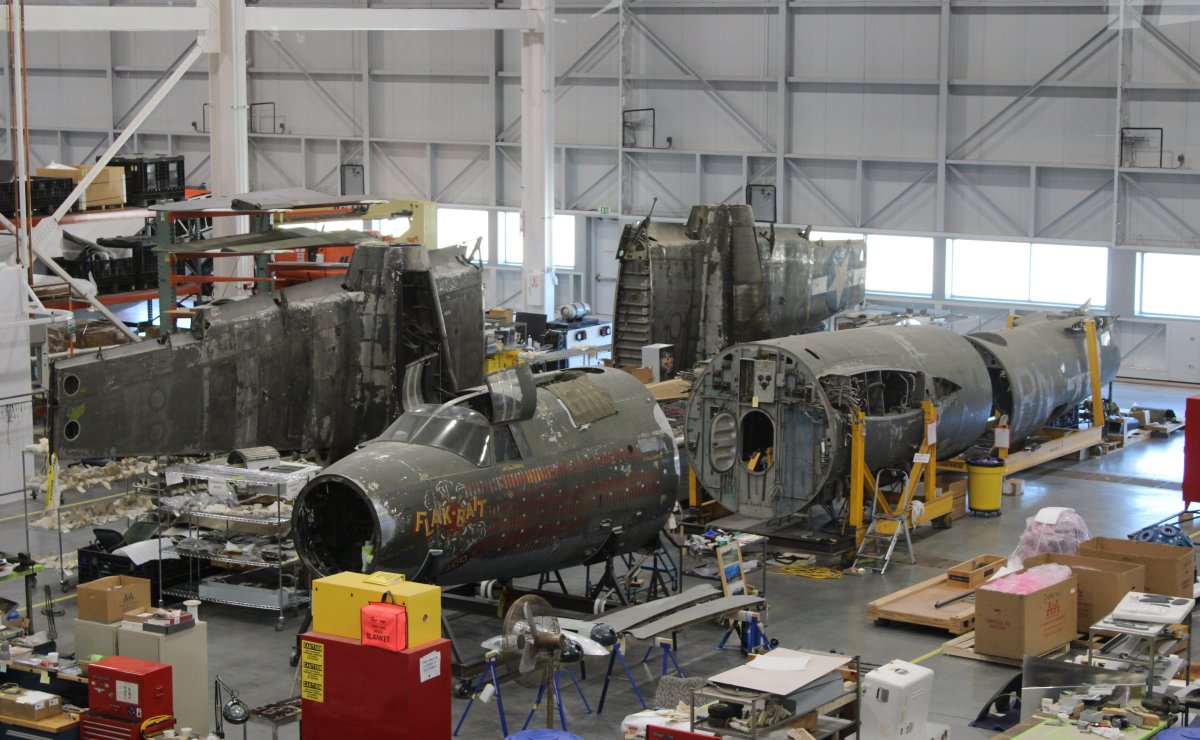 |
|
|
Not much progress on this Lincoln-Standard H.S. (Modified J-1) either. What's the deal?
|
| |
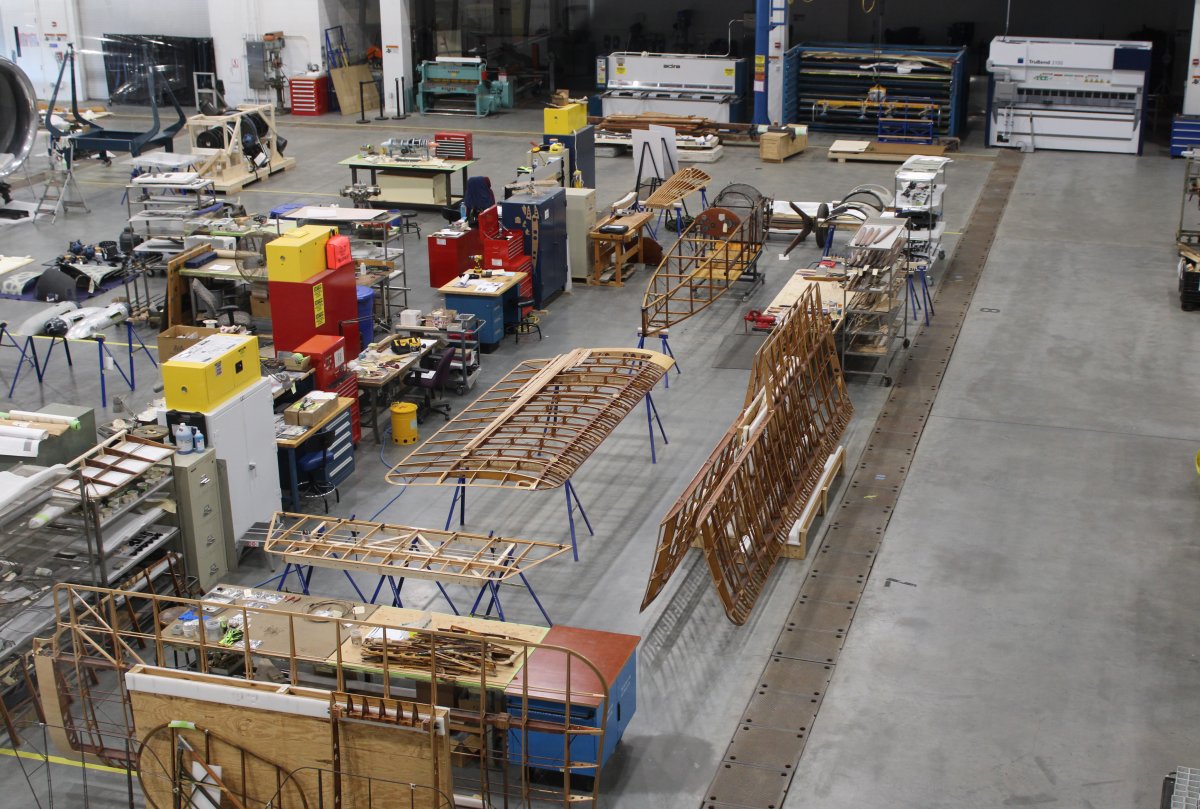 |
|
|
This plane is one of the giant's in the Experiemental -- homebuilt -- world: the Story-Eyerly Special named Little Bee Gee.
From the placard: "George Bogardus flew Little Bee Gee from Oregon to Washington D.C. in 1945 and 1951. These flights played a critical role in convincing the Civil Aeronatics Administration (CAA) that amateurs could design and build safe, reliable aircraft capable of extended cross-country flying. The CAA formulated legislation that allowed agency inspectors to certifiy experimenta, amateur-built aircraft. The laws took affect in 1952, and the next year Paul Poberezny and a group of amateur airplane builders founded the first chapter of the Experimental Aircraft Association (EAA). Today the EAA boasts 170,000 members in more than 900 countries around the world."
I would add to that that there are more than 10,000 homebuilt flying RVs have been built. But there is no RV here! They should have one here, representing the market leader in homebuilt kitplanes.
|
| |
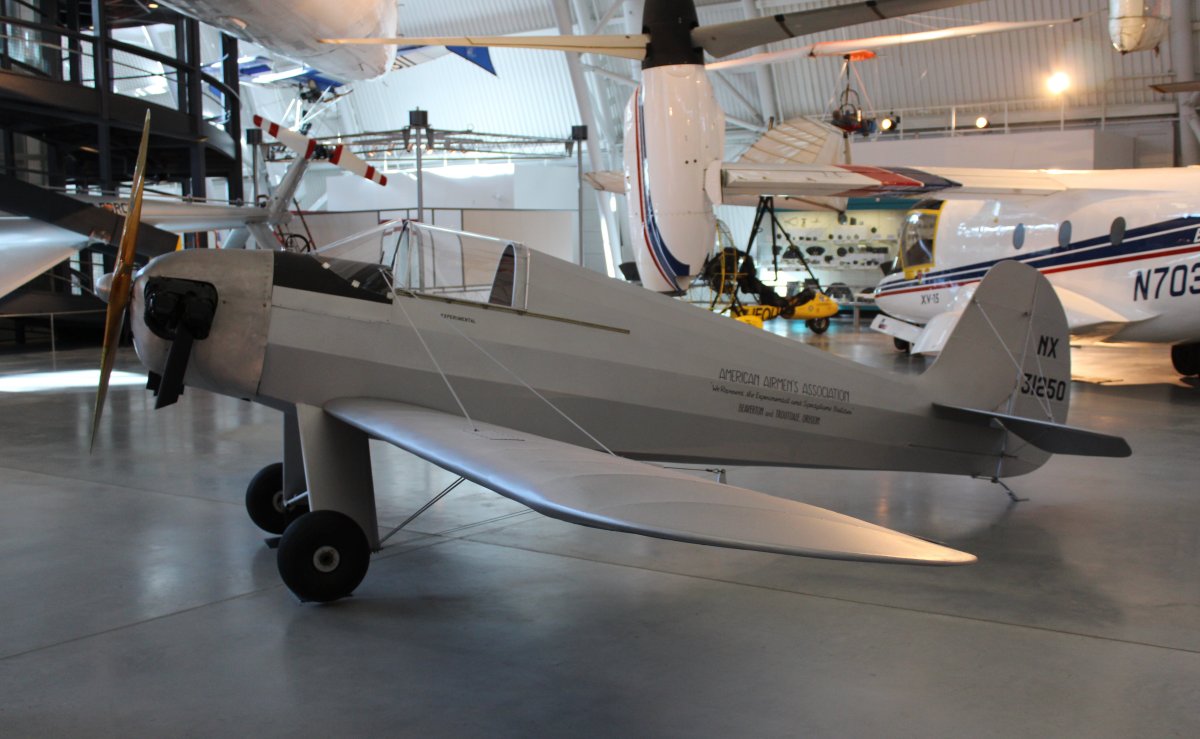 |
|
| Looking down at the Little Bee Gee which is powered by the famous Continental A-65 engine. Flying a plane like this from coast to coast in the days before GPS, self-service fuel pumps, smartphones, in-flight weather, etc. was no small feat. |
| |
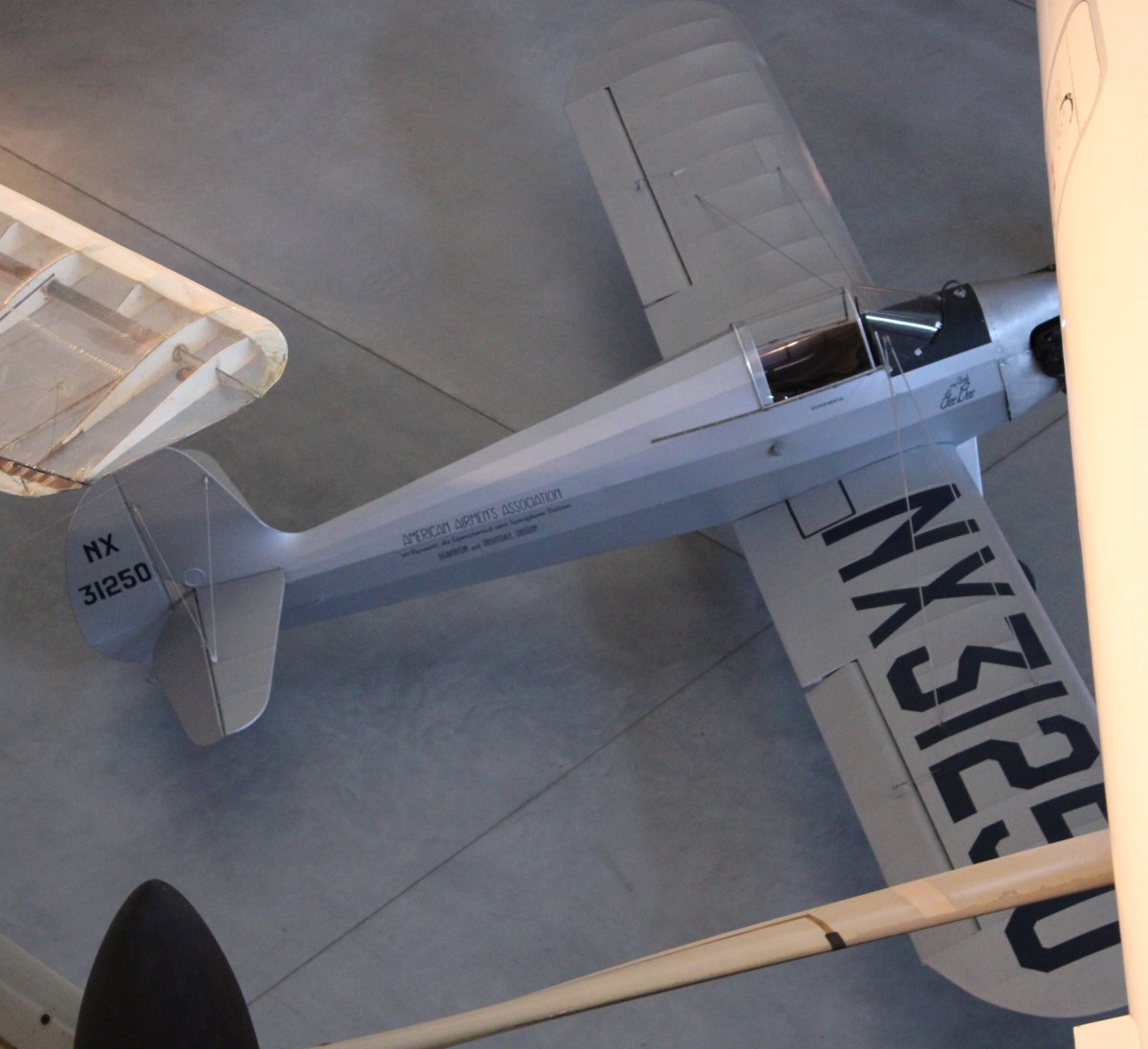 |
|
| A good shot of the SR-71. I saw these takeoff a few times at Kadena Air Force Base in Okinawa when I was deployed there back in 1985. Most impressive! |
| |
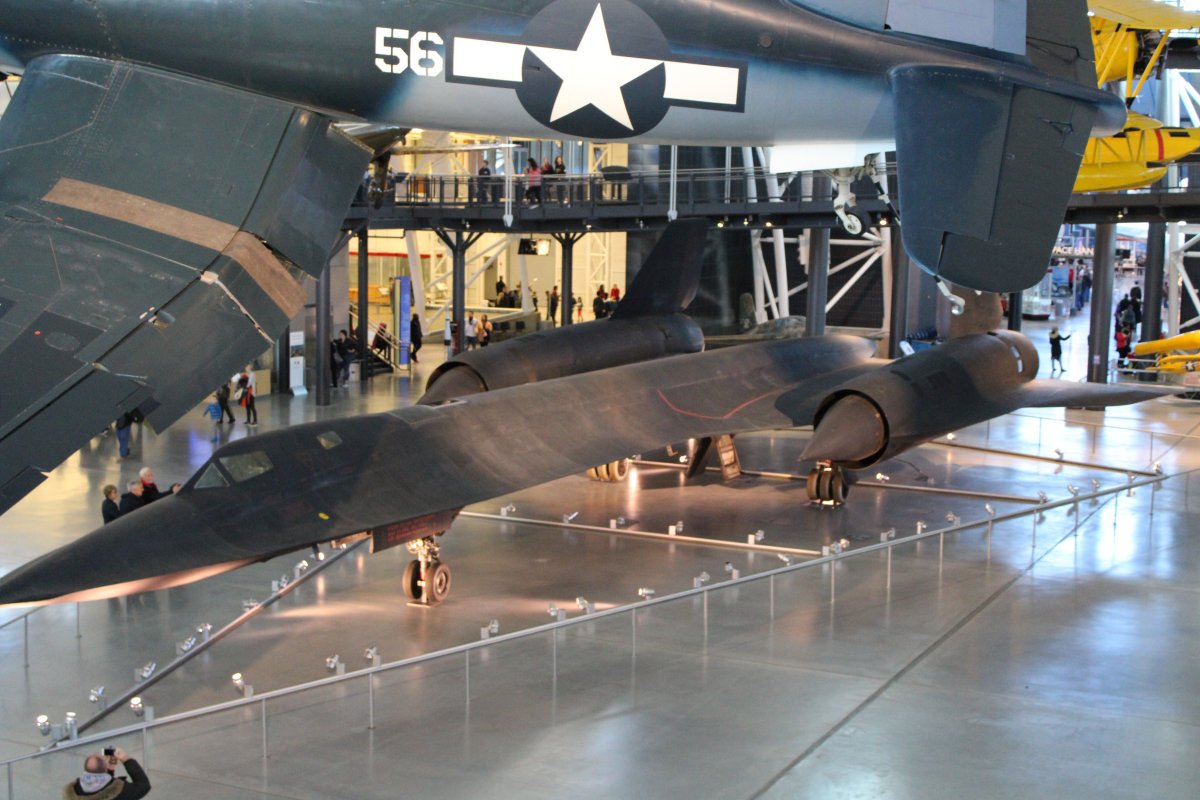 |
|
| Another look. |
| |
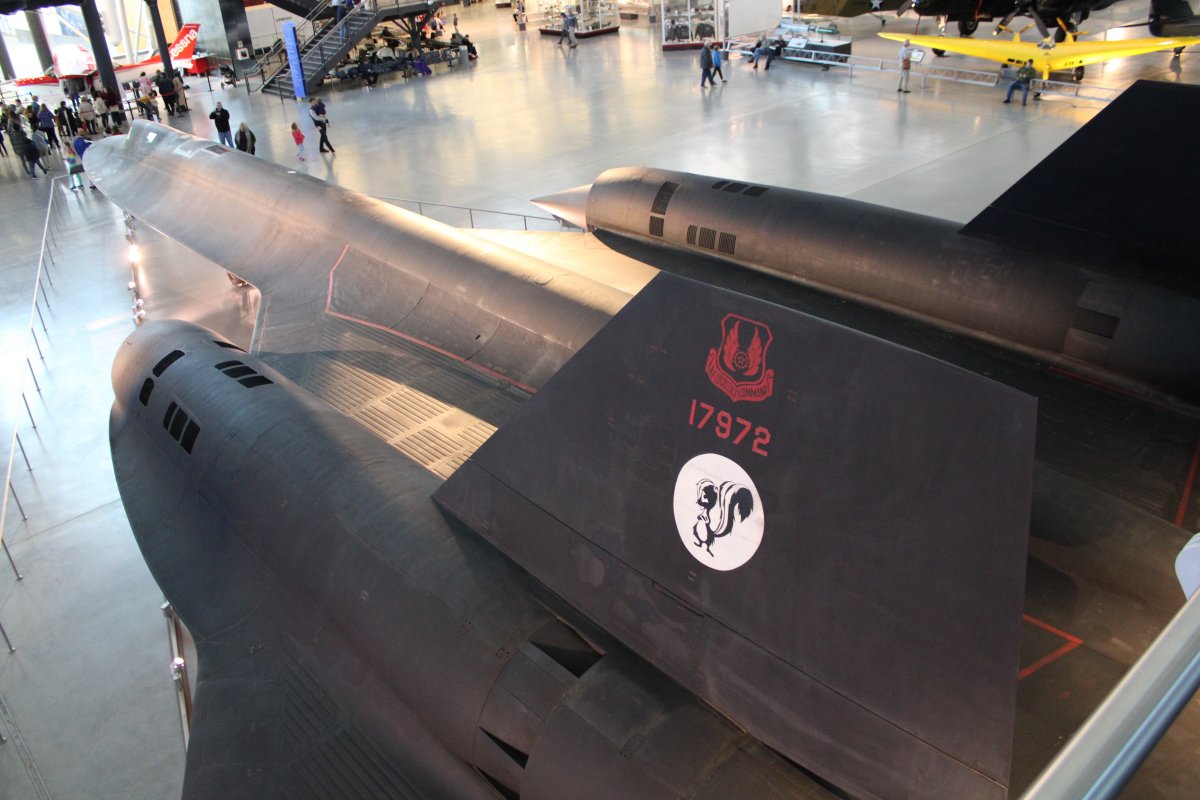 |
|
|
Now I'm in the jet area which has filled in over the years. Looking down at an A-6 Intruder and a F-4 Phantom.
|
| |
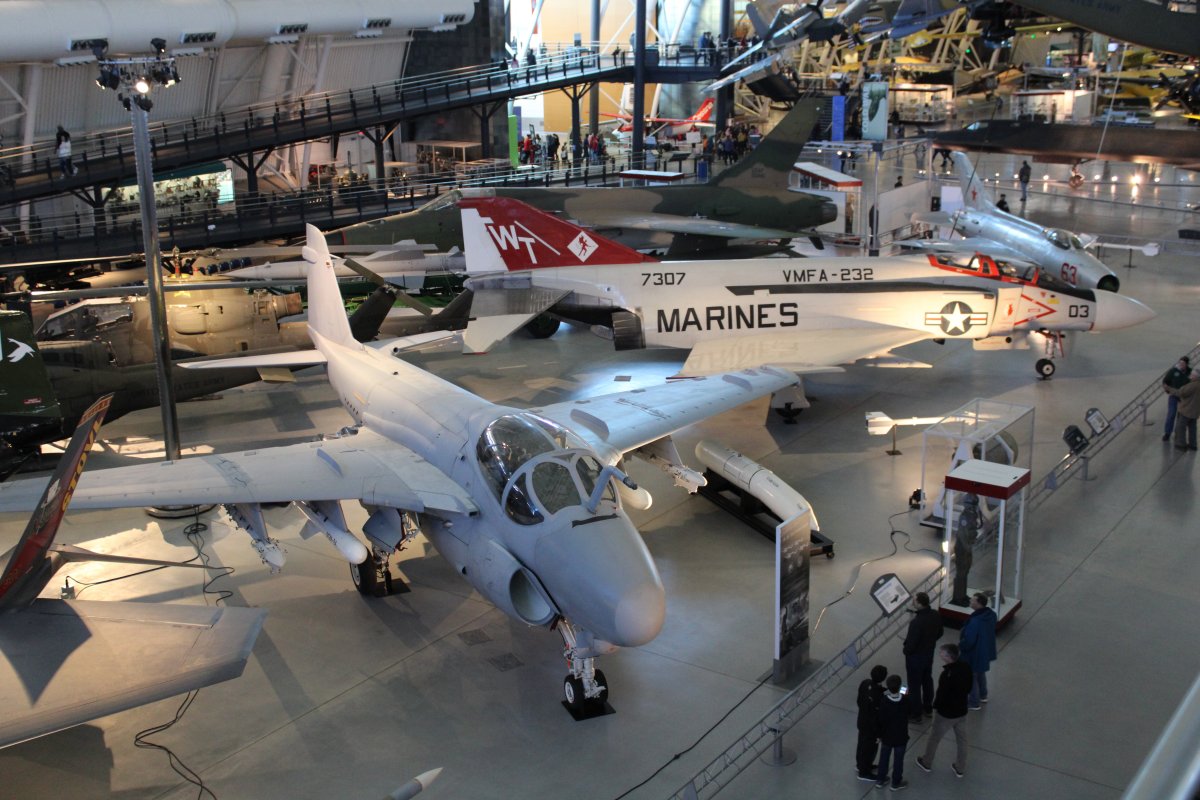 |
|
| Gotta include a picture of my favorite plane: the F-14 Tomcat. Notice the Phoenix missile hanging down in the center. And a Sidewinder hanging under the left wing. This particular jet renowned for two reasons: it is credited with a MiG kill off Libya in 1989. And it was originally an F-14A model but was converted to an F-14D in the early 90's. The D-model had more powerful engines, a glass cockpit and an upgraded radar among other things. |
| |
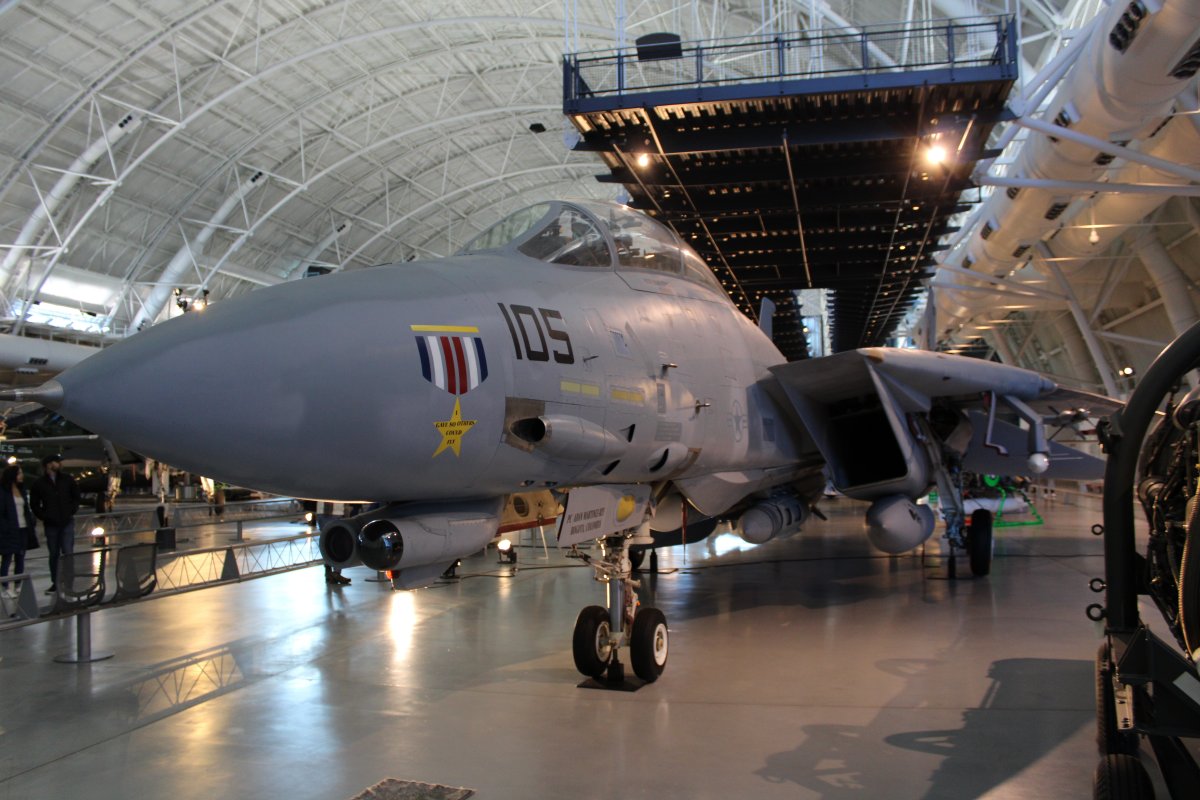 |
|
|
Wow. A beautifully polished T-33 Shooting Star.
|
| |
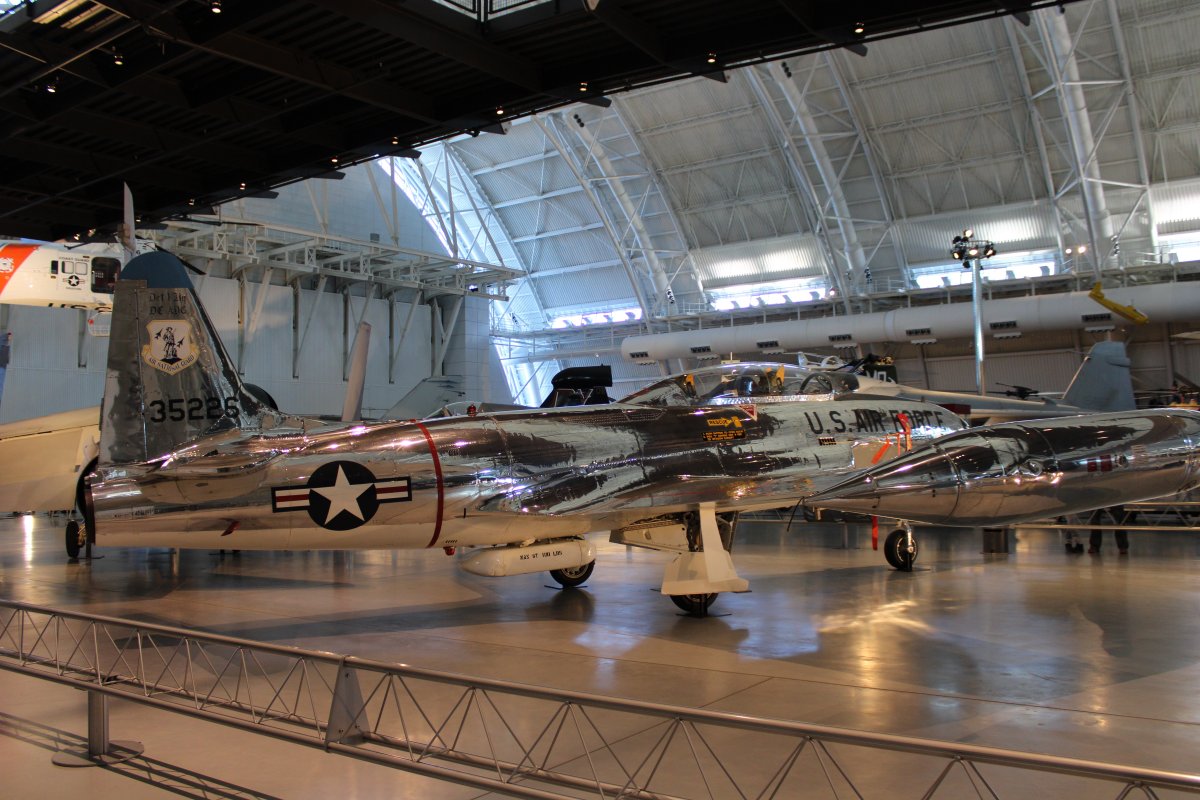 |
|
|
An F-35 which is the U.S. military's newest stealth combat aircraft. This one is the B model which is the short takeoff and land (STOL) variant.
It took forever for the F-35 to get built. The stealth jet was way overbudget. It's performance has been criticized. But they are finally operational. I have seen one fly and it is pretty impressive. Plus it has stealth. I get the strong impressing that in air combat if, as Wolf says in Pulp Fiction "self-preservation is an instinct you possess", you want to be flying a stealth jet as opposed to non-stealth. I think the jet is a success due to the fact that many other countries are also flying or buying them: Great Britain, Israel, Japan, Poland, Australia, Belgium, Denmark, Italy, Netherlands, Norway, South Korea, Singapore, Turkey. Well, not Turkey.
|
| |
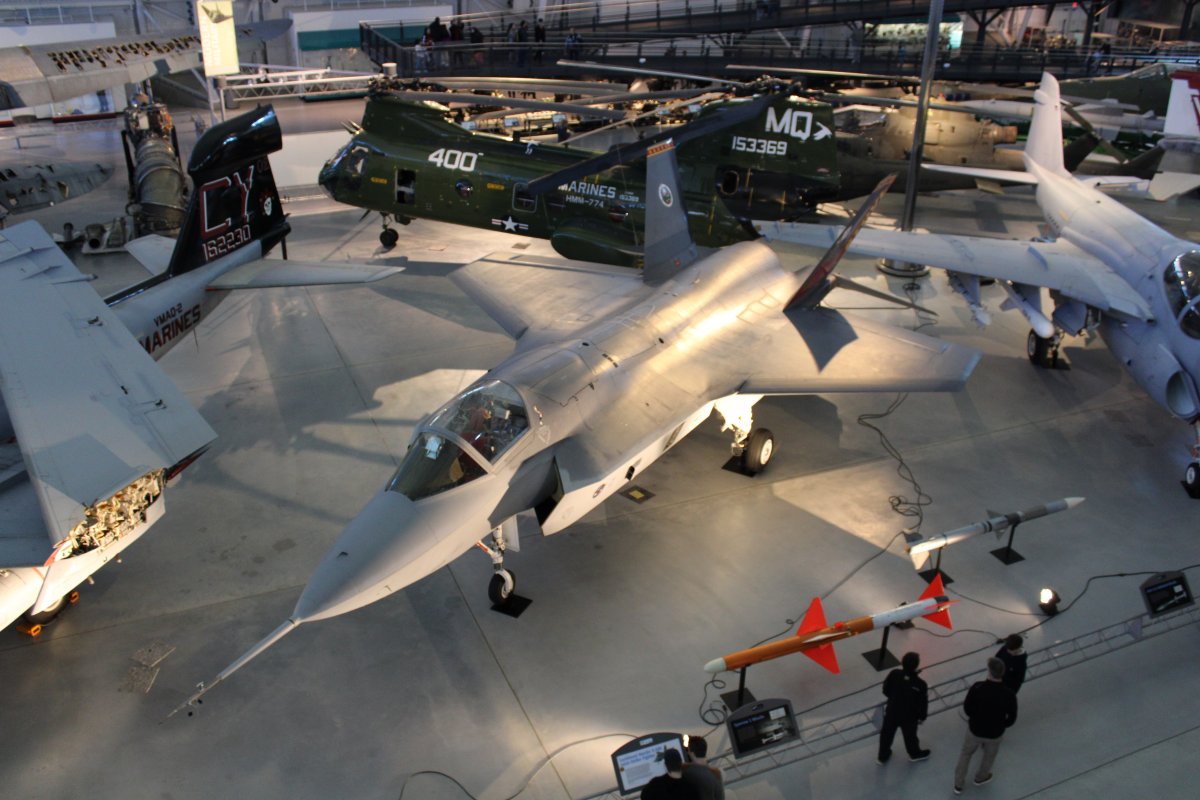 |
|
| A MQ-1L Predator loiters menacingly overhead. It gathered intelligence and performed reconnaissance, as well as performed offensive operations, as evidenced by the two Hellfire missiles under the wings. I believe it is in limited service now, having been replaced by the MQ-9 Reaper. |
| |
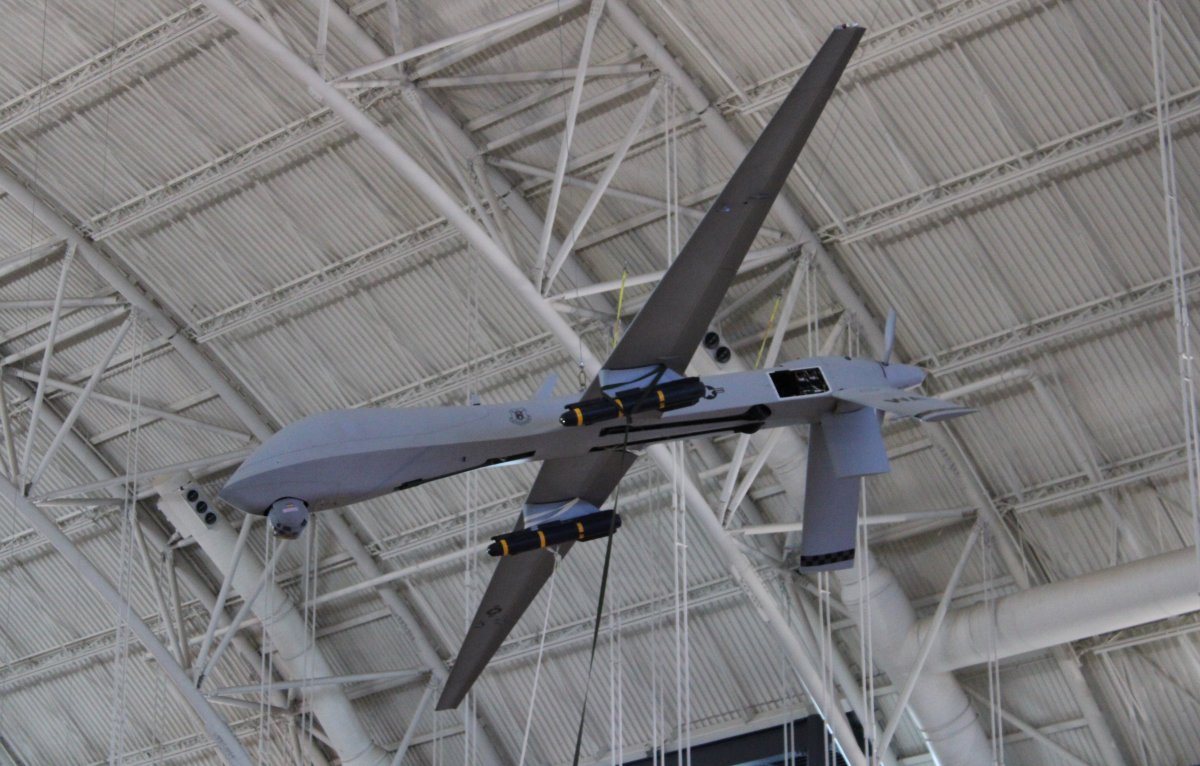 |
|
| A neat model of the first U.S. Aircraft Carrier, the U.S.S. Langley. |
| |
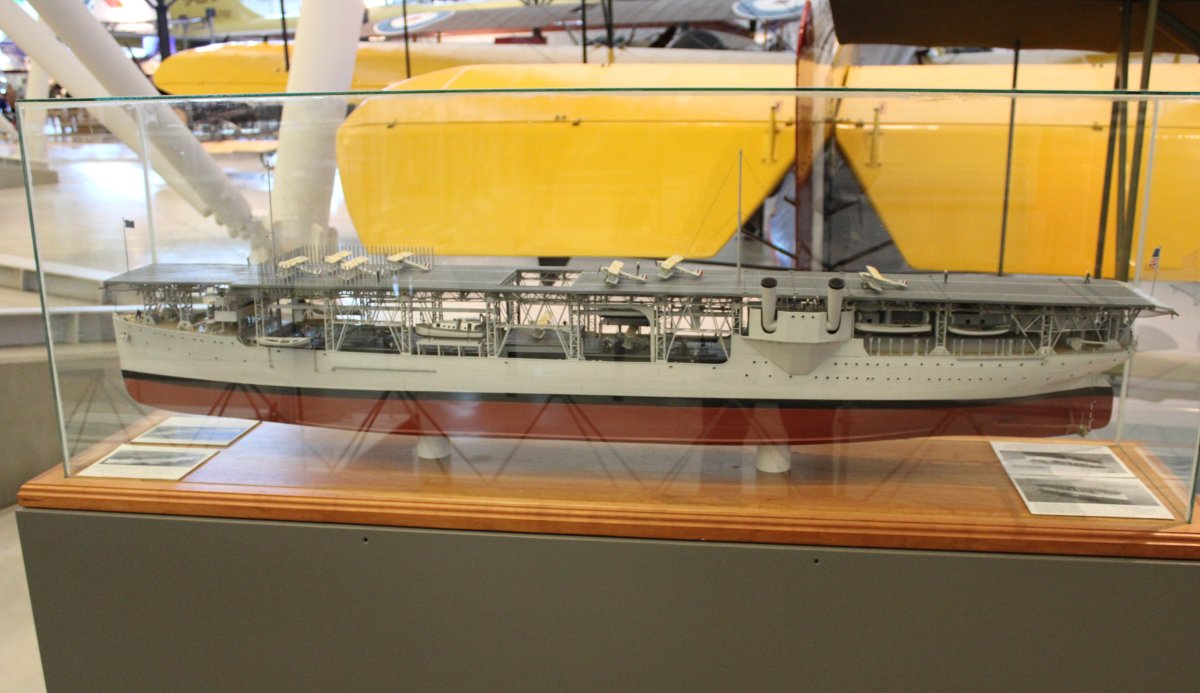 |
|
|
Heading out through the donor hall of fame. Good day!
|
| |
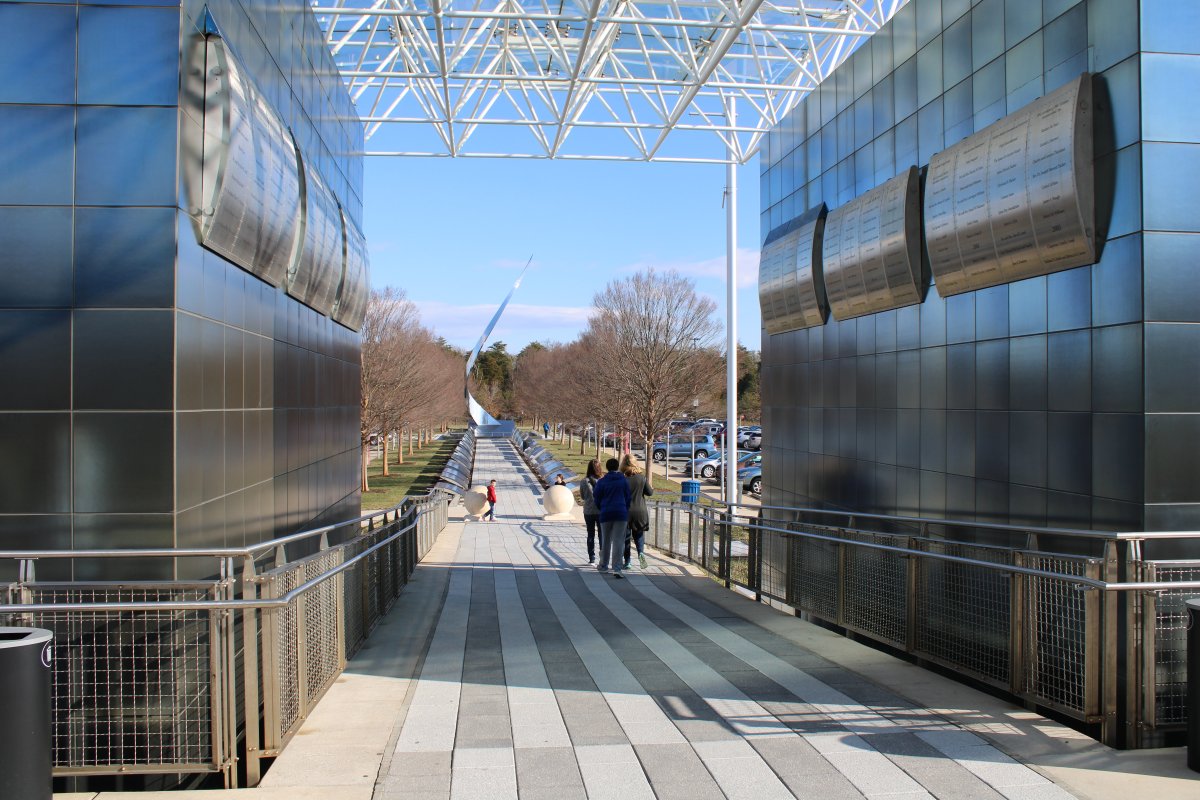 |
|
| |
| |
| |
|
|
|
|
|
|






































